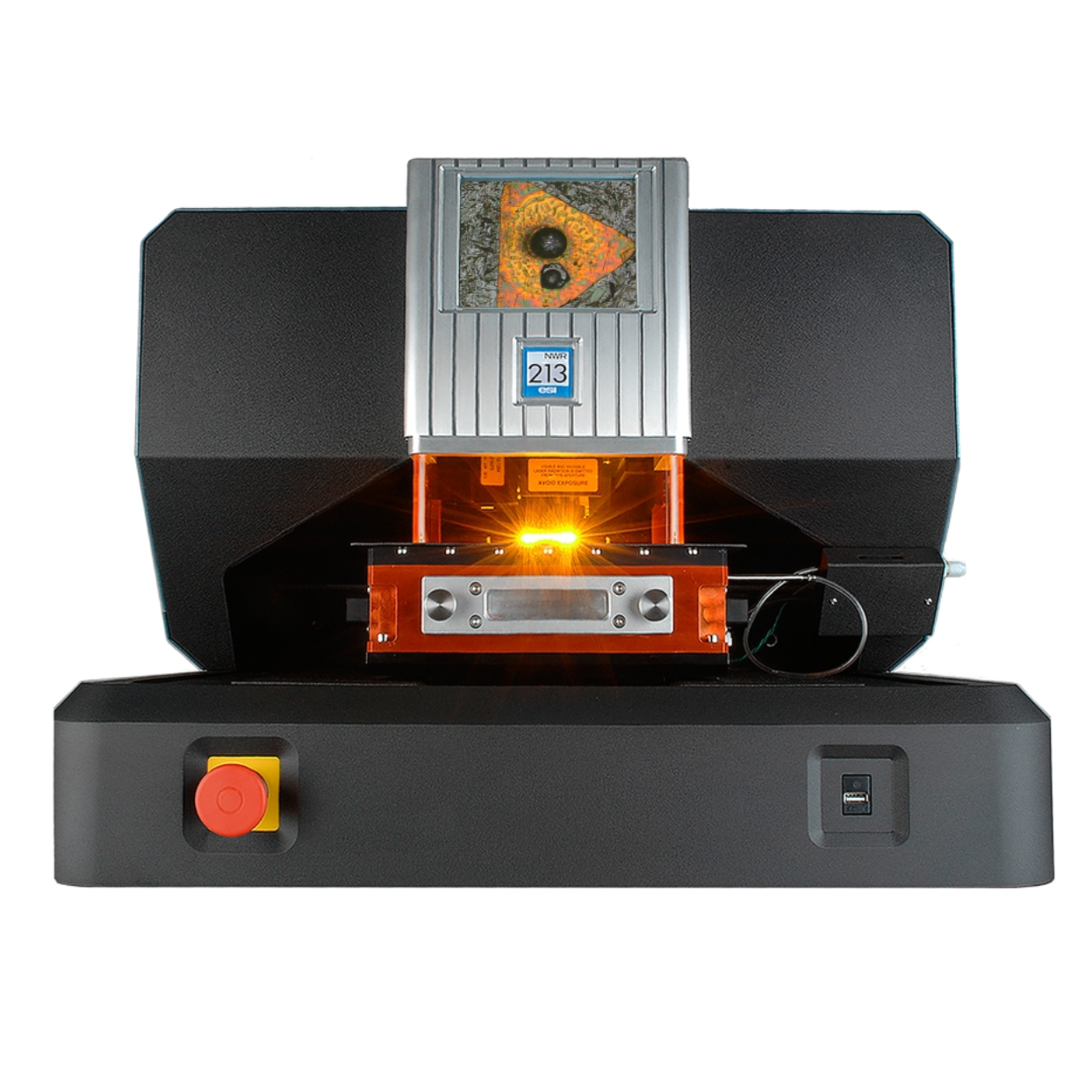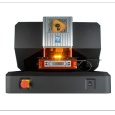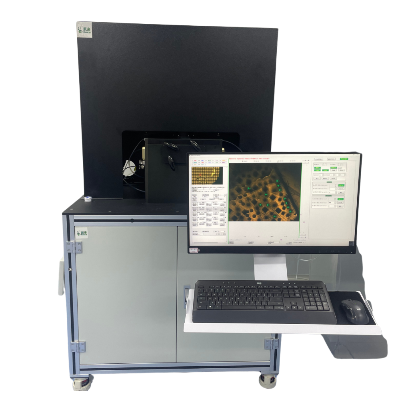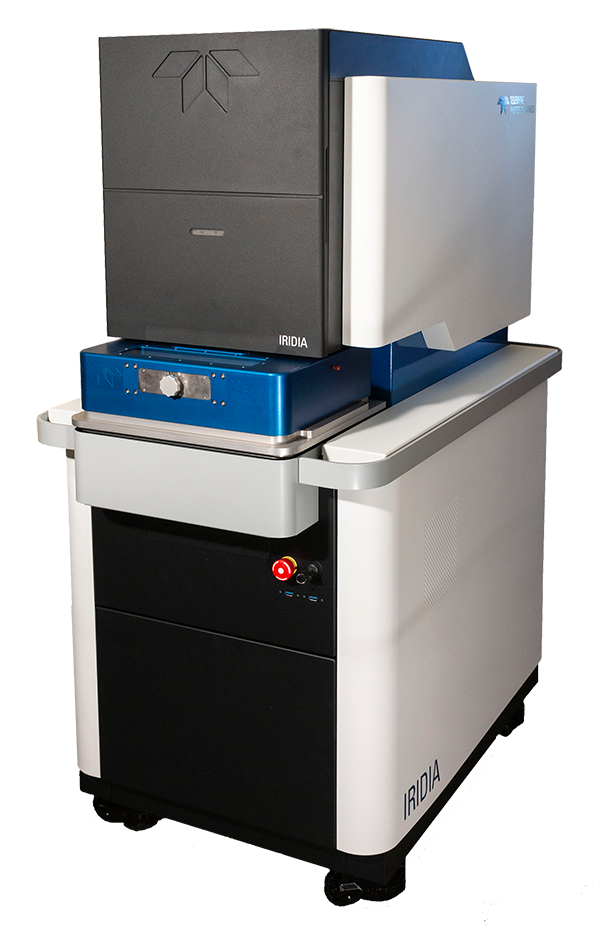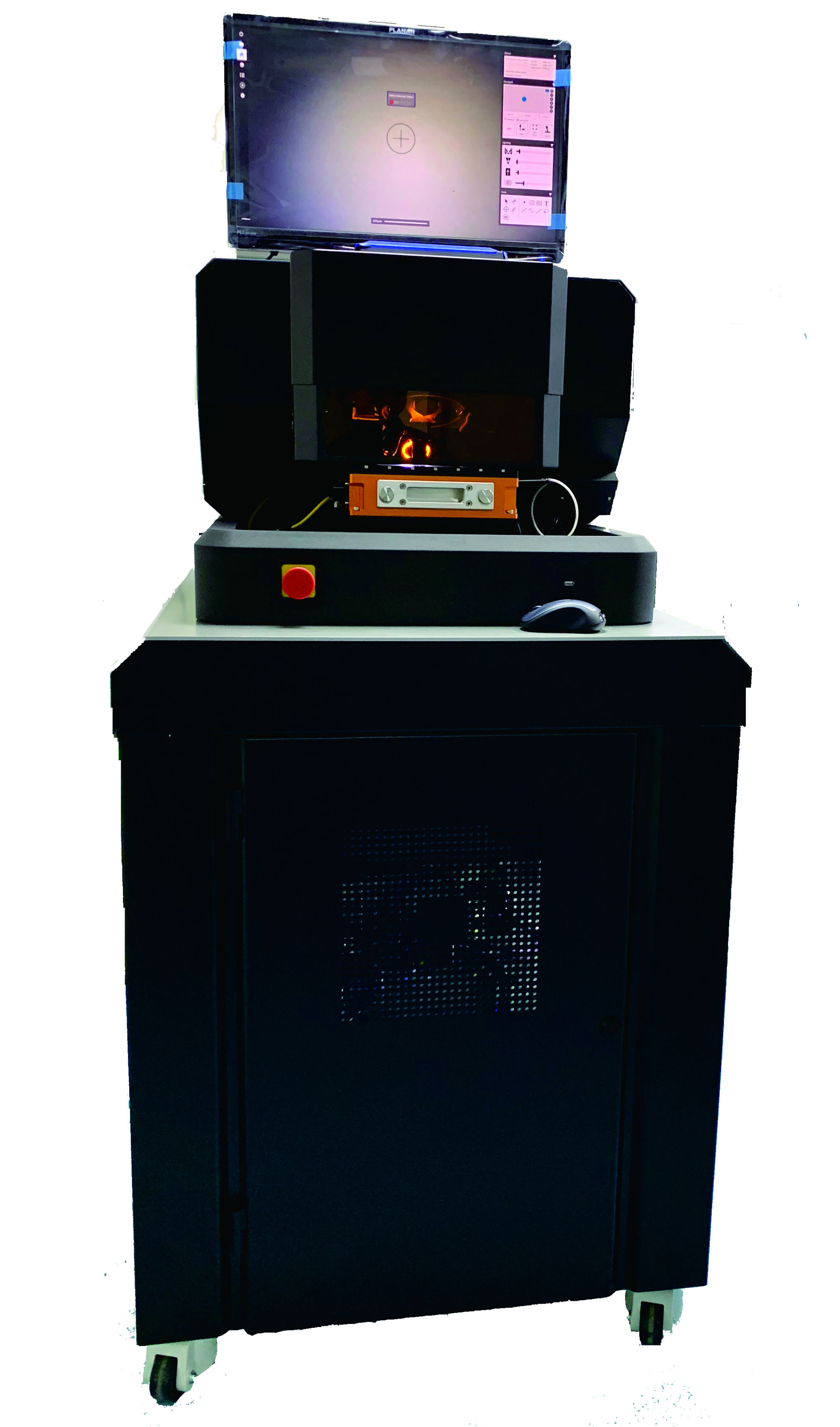方案详情
文
达曼那花岗岩(DG)位于伊拉克东北部的Shalair山谷地区,位于Sanandaj Sirjan区(SSZ)内。DG岩石锆石U-Pb年龄为364-372 Ma,为花岗体结晶年龄。DG岩石为a型花岗岩、高溶蚀岩和过铝质。它们富含SiO2、碱、Ga/Al、Ga、Zr和Rb/Sr,而CaO、MgO、Sr、P和Ti等被耗尽。这些岩石呈现出陡峭的REE模式,LREE富集相对于HREE ((La/Yb)N= 5.7-42.5), Eu异常明显为负,反映长石分馏。地球化学特征及相互关系表明,DG岩为非造山期,赋存于具有类油岩岩浆亲和力的伸展构造体系中。DG的岩石的特点是低Y / Nb比率(0.2 - -1.5)和积极εNd(371毫安)值(+ 1.6 + 4.2),能指示地幔起源。在Y/Nb - yb /Ta图中,A1型花岗岩的DG岩图,Y/Nb值略高,且有从A1向附近A2过渡的趋势,这可能表明地壳污染作用较弱。同位素和地球化学资料表明,富集的地幔源岩浆与地壳污染和分馏结晶作用共同作用形成了该盆地的岩浆。SSZ地区DG岩石的地球化学和地质年代学结果表明,该地区为伸展带,可能代表泥盆世晚期或更早时期新特提斯裂隙的早期阶段,这与在阿拉伯北部和伊朗西北部的海西期造山运动和构造岩浆活动有关。
方案详情

Lithos 264 (2016)360-374Contents lists available at ScienceDirectLithosjournal homepage: www.elsevier.com/locate/lithosCrossMark 361l.K. Abdulzahra et al. / Lithos 264 (2016) 360-374444860 http://dx.doi.org/10.1016/j.lithos.2016.09.006 Zircon U-Pb ages and geochemistry of Devonian A-type granites in theIraqi Zagros Suture Zone (Damamna area): New evidence for magmaticactivity related to the Hercynian orogeny Imad Kadhim Abdulzahra a*, Ayten Hadi, Yoshihiro Asahara, Hossein Azizi , Koshi Yamamoto Department of Geology, College of Science, University of Baghdad, Baghdad, Iraq Department of Earth and Environmental Sciences, Graduate School of Environmental Studies, Nagoya University,Nagoya 464-8601, Japan ‘ Mining Department, Faculty of Engineering, University of Kurdistan, Sanandaj, Iran ARTIC L E I N F O ABSTRACT Article history:Received 22 February 2016Accepted 4 September 2016Available online 14 September 2016 The Damamna granite (DG) is located in the Shalair Valley area in northeast Iraq within the Sanandaj Sirjan Zone(SSZ). The zircon U-Pb ages for the DG rocks are 364-372 Ma, indicating crystallization of the granitic body. TheDG rocks are A-type granites, hypersolvus and peraluminous. They are enriched in SiO2, alkalis, Ga/Al, Ga,Zr andRb/Sr and depleted in CaO,MgO,Sr, P, and Ti. These rocks show steep REE patterns, with LREE enrichment relativeto HREE ((La/Yb)N=5.7-42.5) and pronounced negative Eu anomalies refleKcting feldspar fractionation. The geywords:eo-A-type granitechemical characteristics and relationships suggest that the DG rocks are anorogenic and were emplaced in an ex-Hercynian orogenytensional tectonic regime having an OIB-like magma affinity. The DG rocks are characterized by low Y/Nb ratiosZircon U-Pb age (0.2-1.5) and positive eNd (371 Ma) values (+1.6 to +4.2), which indicate a mantle origin. In the Y/Nb-Yb/TaDamamna diagram, the DG rocks plot in the A1-type granite field, with slightly higher Y/Nb values and a tendency ofIraq transitioning from A1 to the nearby A2 field, which possibly indicates a slight crustal contamination effect. Theisotopic and geochemical data suggest that a combination of enriched mantle source magma with crustal con-tamination and fractional crystallization contributed to the generation of the magma for the DG. The geochemicaland geochronological results for the DG rocks in the SSZ suggest an extensional zone that probably represents anearly stage of Neo-Tethys opening during the Late Devonian or earlier, and this was associated with theHercynian orogeny and tectono-magmatic activity in northern Arabia and northwestern Iran. 1. Introduction The Zagros Orogenic Belt (ZOB) is a part of the Alpine-HimalayanOrogenic Belt and resulted from subduction, obduction and collisionprocesses, which are linked to the opening and closure of the Neo-Tethys Ocean beneath the Iranian Plate (Alavi, 1980, 1994; Berberianand Berberian, 1981). The ZOB consists of three parallel tectonic subdi-visions from SW to NE (Alavi, 1994): (1) the Zagros Fold-Thrust Belt,(2) the Sanandaj Sirjan Zone (SSZ), and (3) the Urumieh-DokhtarMagmatic assemblage (UDMA) (Fig. 1). The Sanandaj Sirjan Zone is ametamorphic belt of the Zagros orogen and a region of polyphase defor-mation and metamorphism (Alirezaei and Hassanzadeh, 2012;Hassanzadeh and Wernicke,2016;Hassanzadeh et al., 2008); it consistsmainly ofdeformed, metamorphic rocks associated with numerous plu-tons, as well as widespread Mesozoic volcanic rocks (Mohajjel et al.,2003). ( * C orresponding a uthor. ) ( E-mail address: e m a d a ls af fi @ y ahoo . c om ( I .K. Abdulzahra). ) ( 0024-4937/O 2016 Elsevier B.V. All rights reserved. ) Sharland et al. (2001) proposed that the Hercynian (Variscan)events took place in the Late Devonian to Early Carboniferous. Duringthis period, the onset of SW-directed subduction along the passive mar-gin of Gondwana initiated an early stage of back-arc rifting, which wasrestricted to the northern part of the Arabian Plate, with basaltic volca-nism in Turkey and Iraq (Sharland et al., 2001). The Chalki volcanicrocks, which include alkali basalts with some pyroclastics, are exposedin northern Iraq and represent an extensional tectonic regime in thenorthern Arabian Plate during the Late Devonian.The Chalki volcanicsare an integral part of the upper beds of the Pirispiki Formation. Thisformation is included in the basal part of the Late Devonian-EarlyCarboniferous megasequence (Buday, 1980; Sharland et al., 2001). Hercynian magmatic activity has been considered as characteristicof the northeastern part of Iran. In contrast, the Zagros, Central Iranand Alborz regions show no sign of Paleozoic orogenic events(Berberian and Berberian, 1981). Therefore, the plutonic rocks locatedin the SSZ have been interpreted to have formed as a consequence ofthe subduction and closure of the Neo-Tethys Ocean beneath theIranian Plate during Mesozoic-Cenozoic time (e.g., Ahmadi Khalajiet al.,2007). The major distribution of granitoid rocks belongs to the 52 56 Fig. 1. The main tectonic units of the Zagros Orogenic Belt (modified from Alavi, 1994), showing the location of the DG.Zircon U-Pb ages of A-type granites in the Sanandaj Sirjan Zone(Alirezaei and Hassanzadeh, 2012; Bea et al., 2011; Mahmoudi et al., 2011; Mazhari et al., 2009; Shafaii Mogadam et al., 2015b; Shahbazi et al., 2010; Shakerardakani et al.,2015) are alsoshown.ZDF: Zagros Deformation Front; MZT: Main Zagros Thrust. Middle to Late Jurassic and is linked to the subduction of the Neo-TethysOcean beneath the Iranian Plate (e.g. Ahmadi Khalaji et al., 2007; Aziziet al., 2011a, 2015; Chiu et al., 2013; Esna-Ashari et al., 2012;Fazlniaet al., 2009; Mahmoudi et al., 2011; Shahbazi et al., 2010). Late Paleozoicplutons are rarely found there (e.g.,Alirezaei and Hassanzadeh, 2012;Bea et al., 2011). In this study, we report new radiometric ages and chemical andSr-Nd isotopic features of the Damamna granite (DG) in the ShalairValley within the SSZ in northeastern Iraq. The present study demon-strates the existence of Devonian igneous activity and probably anancient rifting or extensional zone, which represents an early stage ofNeo-Tethys opening.Our findings in this research show that the LateDevonian (this study), the Carboniferous and Early Permian (Alirezaeiand Hassanzadeh, 2012; Bea et al., 2011; Shakerardakani et al.,2015)were times of magmatic activity in an extensional tectonic setting inthe SSZ. 2. Geological setting and sampling Northern and northeastern Iraq are considered as part of the ZagrosOrogenic Belt (ZOB), which extends from southeast Turkey throughnortheastern Iraq and northwestern Iran to northern Oman (Alavi,1994). The study area is located in the Shalair Valley within the so-called Iraqi Suture Zone in extreme northeastern Iraq near the Iraq-Iranborder. The Zagros Suture Zone in NE Iraq is divided into three unitsthat are parallel to the Taurus-Zagros Zone: the Qulqula-Khwakurk, thePenjween-Walash and the Shalair units (Buday and Jassim, 1987;Jassim and Goff, 2006; Fig.2a). The Shalair unit is structurally the highestthrust sheet in Iraq and is considered as part of the Sanandaj Sirjan Zone(SSZ) of Iran. It consists of an Upper Permian metamorphosed unit that is overlain by Jurassic and Lower Cretaceous arc-forearc meta-sedimentsand Upper Cretaceous calc-alkaline andesite of the Katar Rash serieswith imbricated Upper Triassic carbonates, which are exposed on thewestern margin of the active Iranian Plate (Buday and Jassim, 1987;Jassim and Goff, 2006). The Shalair Valley is a large eroded east-west-trending asymmetrical anticline that gently plunges toward the east(Smirnov and Nelidov,1962). It extends approximately 30 km with awidth of more than 20 km. The value of the dip ranges from 30° to 70°for the southern limb and from 20° to 40° for the northern limb. In thecore of the Shalair anticline, the Qandil Rock series is composed ofmeta-sedimentary sequences, whereas the Katar Rash volcanic unit isexposed along the limbs and consists of basic to acidic igneous rocks(Fig.2b). Although the term "Shalair Phyllite series" was introduced byDe Villiers (1957), these rocks were later incorporated into the QandilRock series (Al-Shible and Kettaneh,1972; Smirnov and Nelidov, 1962;Fig.2). The Qandil Rock series covers the majority of the Shalair Valleyarea and comprises 2000 m (Smirnov and Nelidov, 1962) of phyllite,schist, slate and greywacke, with minor felsic volcanic rocks and somelenticular limestone (Al-Shible and Kettaneh, 1972; Buday and Jassim,1987; Jassim and Goff, 2006; Smirnov and Nelidov,1962). The contactwith the overlying Katar Rash series is unclear and may be eithergradational or a low-angle unconformity (Jassim and Goff, 2006). Basedon microfacies analyses of limestones in the upper part of the QandilRock series underlying the Katar Rash series, the estimated age of theQandil Rock series is Aptian-Cenomanian. However, a geochronologicalstudy is required to confirm this age. The Qandil Rock series continuesinto the SSZ; it formed in a fore-arc basin in front of the subductionzone dipping underneath the SSZ (Jassim and Goff, 2006). The KatarRash series is also known as the Walash “volcanic” rock series(Al-Shible and Kettaneh, 1972; Smirnov and Nelidov, 1962; Fig.2b). 46.06 46.12 46 18 Fig. 2. (a) Tectonic zones of the Iraqi Zagros Suture Zone (Jassim and Goff, 2006), showing the distribution of igneous and metamorphic rocks. Geological maps of the Shalair Valley area(b) and the Damamna area (c) are modified from Al-Shible and Kettaneh (1972). Zircon U-Pb ages of the Harbar volcanic rocks and the Aulan intrusion are from Ali et al.(2016). Samplelocations are shown as solid circles. Note that the ages of the Damamna granites are considerably revised in this study (i.e., Devonian). This unit is exposed along the limbs of the Shalair anticline and comprises1000 m of calc-alkaline rocks, including basaltic andesite, andesite, daciteand rhyolite (Jassim and Goff, 2006). These rocks have been dated usingthe zircon U-Pb age method: the Harbar volcanic rocks and the Aulangranitic intrusion yield crystallization ages of 108 ± 2.9 Ma and107.7±1.9 Ma, respectively; these rocks are interpreted to have formedin an intra-oceanic arc related to closure of the Neo-Tethys (Ali et al.,2016; Fig.2b). The granites and granodiorite crop out at Aulan, Sirstan,Laladar and Mishao on the limbs within the Katar Rash series, whereas the Damamna granite is the only plutonic body that crops out in thecore of the Shalair Valley anticline within the Qandil Rock series(Fig. 2b,c). Further details on the geology of the Shalair Valley area aregiven in Jassim and Goff (2006). In this study, we focus on the Damamna granite (DG) in the ShalairValley. The location of the DG is shown in Fig. 2c. The DG is locatednorthwest of Meran village. It is intruded within the Qandil Rock series,close to the Iraqi-Iranian border, whereas the other four granitic bodiesare intruded within the Katar Rash series. The DG body is whitish gray to whitish pale green in color. Some DG samples are enriched in iron ox-ides and show a pink color. Generally, the rocks are massive, fine- tomedium-grained, fractured and cut by numerous quartz veins (Fig.3).In some places,the rocks near the contact with the schist exhibitbanding, with preferred orientation of minerals due to shearing, andin other places, the contact is not clear in the present study. More de-tailed studies are needed to determine the relationship between theDG pluton and the metamorphic host rocks. The DG body is surroundedby phyllite and schist concentrically. The majority of the DG rock sam-ples were collected from the central and southern parts as the northernpart is very dangerous because of the spread of the landmines. 3. Analytical techniques All chemical analyses for major and trace elements, zircon U-Pb agedetermination and 87Sr/86Sr-143Nd/144Nd isotope analyses were con-ducted at Nagoya University,Japan. 3.1. Chemical analyses and isotope ratios Eleven fresh samples were chosen for whole-rock chemical analyses.Major elements were measured by WD-XRF (Rigaku ZSX Primus II). A0.5-g sample of each rock powder was mixed with 5.0 g of lithium tetraborate, and the glass bead was prepared for XRF analysis. The GSJreference rocks JA-1, JA-2, JG-1a, JG-2 and JG-3 were also measured to-gether with the samples. For L.O.I. and H20-, 0.4-g samples of rock powder were taken in al-ready weighed quartz crucibles and dried in a drying oven for 12 h at110℃ (H20-); then, the samples were heated in a furnace for 3 h at900℃(L.O.I.). Based on the mass difference before and after heating,the values in weight percent of H20- and L.O.I. were calculated foreach sample. For trace element analysis and Sr-Ndisotope analysis, a 100- to200-mg powdered sample was decomposed in two steps to assurecomplete decomposition. First, it was decomposed in HF+HClO4 in acovered PTFE beaker. Then, the dried sample was dissolved in 10 mlof 2.4 M HCl, and the sample solution was moved to a polypropylene(PP) centrifuge tube to separate residue (A) and clear upper portion(B). The residue (A) was then moved into a smaller PTFE vessel anddried. The second decomposed residue (A) was treated in HF+ HCl04and kept in a steel-jacketed bomb at 180 C for 2-5 days to be complete-ly decomposed. The decomposed material was dried and then dissolvedin 3 ml of 6 M HCl. This solution was mixed with the solution (B) andkept at 80-100°C for 1 h to be homogenized. The mixed sample solu-tion was split into two aliquots: one for trace elements including REEsand the other for Sr and Nd isotopes. After drying the former portion, it was dissolved in 2% HNO3 for ICP-MS analysis. As for the latter, to iso-late Sr and REEs including Nd, conventional column chemistry wasconducted using a cation exchange resin (BioRad AG50W-X8,200-400 mesh) and HCl as an eluent. The neodymium was then sepa-rated from the extracted REE fraction using a cation exchange columnwith a-hydroxyisobutyric acid(a-HIBA) as an eluent. Trace elements including REEs were measured using an inductivelycoupled plasma-mass spectrometer (ICP-MS, Agilent 7700x). The87Sr/86Sr and 143Nd/144Nd ratios were measured with thermal ioniza-tion mass spectrometers (TIMS), VG Sector 54-30 and GVI IsoProbe-T, a Qtz 0.5mm Mag GraphicIC Kf Kf Qtz 0.5mm Pl Mag Kf Qtz 3.2. U-Pbzircon age Two rock samples,D-11 and D-14, were selected for U-Pb zircon agedetermination. The ICP-MS of Agilent 7700x connected with laser abla-tion (LA), NWR213 (Electro Scientific Industries,USA), was used for the b 0.5mm Graphic Zrn. Kf acg Fig. 4. Photomicrographs of the DG. (a, b) Graphic intergrowths of K-feldspar and quartz, (c) deformation twin lamellae in plagioclase,(d) perthitic texture, (e) microfracture in zircongrains, (f) muscovite with quartz veinlet, (g) single grain of magnetite with sericite, and (h) magnetite aggregates. Symbols:Kf= alkali feldspar; Pl= plagioclase;Qtz =quartz;Mag= magnetite; Zrn=zircon and Ms = muscovite. age determination. The zircons were separated using conventional mag-netic and heavy-liquid techniques, including crushing, sieving, and rins-ing with plenty of water. Collected zircon grains were mounted in resinon a glass slide. Cathodoluminescence images (CL) were taken using ascanning electron microscope (SEM) (Hitachi S-3400N) to study the in-ternal structure and morphology of zircon grains as a guide to selectinggood sites for U-Pb measurement. U-Pb analysis of zircon grains by LA-ICP-MS was performed using a NIST SRM 610 glass standard (Goolaertset al., 2004) and a 91500 zircon standard. A detailed description of theLA-ICP-MS analysis is provided in Kouchi et al. (2015) and Orihashiet al. (2008). 4. Results 4.1. Petrography The rocks of the Damamna granite are composed mainly ofK-feldspar (52%), quartz (38%) and plagioclase (<3%). Zircon, apatite,muscovite,magnetite and amphibole are the accessory minerals identi-fied, making up approximately 7%, with sericite, chlorite and iron oxidesas alteration products. The K-feldspar (orthoclase) grains are anhedralto subhedral, with an average grain size of approximately 1.7 mm.Graphic intergrowth relationships between feldspar and quartz are ob-served in most samples (Fig. 4a, b). This reflects simultaneous crystalli-zation of K-feldspar and quartz from a silicate melt close to the eutecticpoint (Petersen and Lofgren, 1986). Perthitic textures are observed in afew samples (Fig.4d). The quartz grains are anhedral, with an averagegrain size of approximately 0.9 mm. Plagioclase grains are subhedraland show deformed twin lamellae (Fig. 4c). The accessory mineral zir-con is present in all samples of the DG rocks (Fig.4b, e). Amphibole oc-curs as yellowish-green fine-grained aggregates with faint pleochroismand interlocked boundaries of quartz and K-feldspar, and it is usually as-sociated with chlorite. Muscovite is rare, found in a few samples assmall flakes that are usually dispersed within K-feldspar crystals(Fig. 4f). It may be formed by transformation of K-feldspar (Montoya , and Hemley,197). Opaque minerals are mostly primary magnetite,which occurs as single euhedral to subhedral grains in most samplesand commonly is enclosed in or along the margins of K-feldspar andquartz (Fig. 4g, h). It also occurs as a secondary mineral in very fine-grained disseminated aggregates and is often associated with deformedand altered regions. Sericite is found as the alteration product ofK-feldspar and plagioclase (Fig. 4g). 4.2. Zircon U-Pb geochronology The zircon grains of the DG rocks are transparent, prismatic crystalswith lengths up to 100 um. CL images (Fig.5a, b) reveal the interiorstructure of the grains. The U-Pb analytical results of the selected zircongrains are listed in Table 1. According to the estimates from 204Pb inten-sity measured by LA-ICP-MS analysis, these zircon grains have low com-mon lead contents: 0.23% and 0.28% for D11 and D14, respectively. Zircon grains from D11 and D14 have Th/U ratios of approximately0.75 and 0.77, respectively, suggesting a magmatic origin (Chen et al.2007; Hoskin and Schaltegger, 2003; Rubatto, 2002). Both rims andcores for the zircon grains with zoning structure have the same age(Table 1, Fig.5). For example, the rim parts such as D14-8 and thecore parts such as D14-28 show the same age within the margin oferror (Table 1, Fig.5). Therefore, the zircon grains are of magmatic originwithout inherited cores. Based on the exported data from the LA-ICP-MS,two U-Pb ages for the DG were calculated using ISOPLOT v. 4.15 software(Ludwig, 2012):364.4±8.5 Ma with a mean square weighted deviation(MSWD) value of 3.6 for sample D11 and 372.1±3.8 Ma (MSWD=3.2)for sample D14 (Fig. 6a,b). The ages are consistent and indicate that thecrystallization time of the DG is the Upper Devonian period. Theirweighted average is 370.8±3.5 Ma. 4.3. Whole rock geochemistry The analytical results of the major oxides in weight percent andthe trace elements including REEs in ppm are listed in Table 2. The Table 1LA-ICP-MS analyses for zircon grains from the Damamna granite (DG) rocks. Spot Th/U 206Pbc* 207Pb/206Pb ±Error 26 206Pb/238U ±Error 26 207Pb/235u ±Error 26 238U-207Pb ±Error 26 235u_207Pb ±Error 26 (%) age(Ma) age(Ma) a)D11 D11-15 0.61 0.24 0.0564 0.0029 0.05972 0.00212 0.44897 0.02828 373.9 13.3 376.5 23.7 D11-37 0.95 0.35 0.0555 0.0026 0.05541 0.00195 0.40328 0.02388 347.6 12.2 344.0 20.4 D11-38 0.78 0.12 0.0531 0.0029 0.06039 0.00215 0.43439 0.02815 378.0 13.5 366.3 23.7 D11-40 0.73 0.52 0.0564 0.0030 0.05781 0.00206 0.41662 0.02649 362.3 12.9 353.6 22.5 D11-43 0.71 0.10 0.0534 0.0030 0.05876 0.00286 0.42659 0.03139 368.1 17.9 360.7 26.5 D11-48 0.70 0.00 0.0550 0.0033 0.05932 0.00290 0.44954 0.03453 371.5 18.2 376.9 29.0 D11-50 0.62 0.27 0.0554 0.0030 0.05585 0.00272 0.41044 0.03007 350.4 17.0 349.2 25.6 D11-51 1.00 0.20 0.0544 0.0029 0.05974 0.00290 0.43510 0.03154 374.0 18.2 366.8 26.6 D11-54 0.81 0.00 0.0544 0.0025 0.05434 0.00185 0.40742 0.02326 341.1 11.6 347.0 19.8 D11-58 0.75 0.00 0.0545 0.0028 0.05873 0.00202 0.44163 0.02720 367.9 12.6 371.4 22.9 D11-59 0.64 1.31 0.0561 0.0036 0.05924 0.00166 0.45853 0.03179 366.2 10.3 318.8 22.1 b)D14 D14-1 0.63 0.00 0.0535 0.0031 0.05895 0.00155 0.43493 0.02749 369.2 9.7 366.7 23.2 D14-2 0.72 0.00 0.0534 0.0025 0.06100 0.00154 0.44899 0.02372 381.7 9.6 376.6 19.9 D14-4 0.85 0.11 0.0540 0.0022 0.05904 0.00146 0.43248 0.02061 369.8 9.1 364.9 17.4 D14-5 0.69 0.00 0.0530 0.0026 0.05932 0.00151 0.43316 0.02431 371.5 9.5 365.4 20.5 D14-6 0.92 0.26 0.0531 0.0024 0.06119 0.00153 0.43086 0.02191 382.9 9.6 363.8 18.5 D14-7 0.76 0.07 0.0536 0.0029 0.05805 0.00151 0.42420 0.02545 363.8 9.4 359.0 21.5 D14-8 0.62 0.00 0.0549 0.0032 0.05856 0.00154 0.44305 0.02805 366.9 9.7 372.4 23.6 D14-9 0.75 0.54 0.0529 206Pbc percentage of contributed by common Pb on the basis of 204Pb single. Value of common Pb was assumed by Stacey and Kramers (1975). Fig.6. U-Pb concordia ages for the DG, (a) D11 and (b) D14. Data-point error ellipses are 26. Table 2Major and trace element concentrations of the Damamna granite (DG) rocks. Sample D2 D5 D7 D11 D13 D14 D17 D19 D20 D21 D22 Sio2 (%) 77.15 79.40 75.41 73.38 74.67 75.35 75.95 79.15 75.27 74.64 75.10 TiO2 0.23 0.34 0.25 0.30 0.26 0.28 0.27 0.22 0.29 0.26 0.26 Al203 12.14 10.54 12.54 14.92 13.40 13.49 13.09 11.26 13.55 13.45 12.88 Fe203 0.79 3.50 1.11 1.34 1.62 0.95 1.30 0.96 0.95 1.38 1.61 MnO 0.00 0.13 0.00 0.00 0.01 0.00 0.01 0.00 0.00 0.00 0.01 Mg0 0.33 0.55 0.23 0.86 0.41 0.27 0.39 0.27 0.25 0.64 0.25 CaO 0.07 0.07 0.08 0.11 0.11 0.10 0.23 0.07 0.09 0.07 0.11 Na20 0.81 0.11 1.43 0.16 1.35 1.66 1.49 0.55 2.00 0.17 1.53 K20 7.08 3.50 7.21 7.27 7.27 7.34 6.59 7.27 6.84 7.45 6.92 P205 0.03 0.02 0.04 0.04 0.05 0.04 0.04 0.03 0.04 0.03 0.05 H2O- 0.21 0.02 0.02 0.07 0.20 0.29 0.02 0.26 0.22 0.19 0.00 L.O.I 1.12 2.05 0.90 1.80 1.12 0.95 1.33 0.85 1.00 1.45 0.90 Total 100.0 100.2 99.2 100.2 100.5 100.7 100.7 100.9 100.5 99.7 99.6 V(ppm) 4.6 21.8 4.6 8.0 6.6 6.7 7.3 5.4 6.4 6.9 6.2 Cr 3.2 27.1 4.2 6.5 6.0 5.8 4.5 3.6 6.0 4.8 4.6 Co 13.5 32.4 30.2 17.1 33.6 2.08 12.5 1.33 0.84 2.97 54.1 Ni 3.9 12.6 4.6 9.9 10.2 6.3 6.0 4.4 3.9 8.5 9.3 Cu 9.5 8.3 10.0 2.1 9.0 5.8 4.2 38.4 2.5 16 10.9 Zn 19.8 44.1 15.3 33.9 31.9 16.5 24.6 20.7 19.0 48.8 24.9 Ga 19.5 16.3 18.3 24.6 20.1 21.3 21.0 16.8 20.1 22.9 19.7 Rb 205 141 191 minerals (e.g., apatite or Fe-Ti oxides) or retention of these elements inthe source during partial melting (Wilson, 1989). Diagrams of 10,000*Ga/Al versus major elements (Na2O, K20 andCaO) (Fig.9a,b), and trace elements (Zr and Ce) (Fig.9c, d) can discrim-inate among the different types of granites (A, M, I and S-types)(Whalen et al., 1987).On these diagrams, all of the DG samples haveA-type affinity, with an average 10,000*Ga/Al similar to the proposedglobal average value for A-type granites (Whalen et al., 1987). Eby(1992) divided A-type granites into two groups, A1 and A2, using theternary plots of Y-Nb-Ce, Y-Nb-3*Ga,Y-Nb-3*Th and Y-Nb-Zr/4 andthe Y/Nb versus Yb/Ta diagram. A1-type granites are related to conti-nental rifts or extensional zones in intraplate settings and have Y/Nb ra-tios less than 1.2, whereas A2-type granites are related to post-collisioncontinental margin settings of island arc basalt magma affinity (IAB), with average Y/Nb ratios greater than 1.2 (Eby, 1990, 1992). On thesediagrams, the DG rocks have a Y/Nb ratio in the range of 0.22-1.5 withan average of 0.75 and a Yb/Ta ratio in the range of 0.26-2.6 with an av-erage of 1.3, and the majority have an A1-type affinity (Fig.10a-d) withthe chemical signature of OIB-type magmas (Fig. 10e). 4.4. Sr and Nd isotope ratios Results of isotope analyses for Rb-Sr and Sm-Nd are listed inTable 3. The initial values of 8Sr/86Sr (i) and 143Nd/144Nd(i) for the DG werecalculated based on the weighted average of the U-Pb zircon age at371 Ma. The values of 143Nd/144Nd (i) vary between 0.51224 and0.51238. All samples have positive eNd (371 Ma) values ranging from Fig. 7.(a) Alkali-silica diagram (Middlemost, 1985). All DG rocks fall within the granite field with sub-alkaline affinity. The boundary between alkaline and sub-alkaline is after Irvine andBaragar (1971). (b) Plots of Al20s/(Ca0+Na20+K20) versus Al203/(Na203 +K20) after Shand (1943). All DG samples fall in the peraluminous field and show ASI values greater thanone. Data for the Khalifan A-type granite from Bea et al. (2011) and the Hassan-Robat A-type granite from Alirezaei and Hassanzadeh (2012) are shown for comparison. Triangle: thisstudy; open circle: Al-Hafdh and Qasim (1992). Fig. 8.(a) REE patterns in the DG samples normalized by chondrite and (b) trace element spider diagram normalized by primitive mantle (normalization after Sun and McDonough,1989).The REE patterns show LREE enrichment and negative Eu anomalies. Data for the Khalifan A-type granite from Bea et al.(2011) and the Hassan-Robat A-type granite from Alirezaei andHassanzadeh (2012) are shown for comparison. 10 Fig. 9. Diagrams of 10,000*Ga/Al versus (NazO+K20),(Naz0+K20)/CaO, Zr and Ce (Whalen et al., 1987), showing the fields of I-, S-, M-and A-type granites. All DG rocks have A-typeaffinity. Nb Nb Y/Nb Fig. 10. Ternary plots of (a) Y-Nb-Ce,(b)Y-Nb-3*Ga, (c)Y-Nb-3*Th and (d) Y-Nb-Zr/4, and (e) Y/Nb versus Yb/Ta diagram (Eby, 1992). The DG rocks fall into the fields of the A1subgroup and the OIB magma type, suggesting a within-plate tectonic setting. Data for the Khalifan A-type granite from Bea et al. (2011) and the Hassan-Robat A-type granite fromAlirezaei and Hassanzadeh (2012) are shown for comparison. + 1.6 to +4.2, indicating a mantle origin.The 87Sr/86sr (i) ratios showvalues less than 0.699, the initial ratio of the bulk Earth (Wilson,1989), because of resetting or disturbance of the whole-rock Rb-Sr iso-tope system by later processes. These Rb-Sr isotope data show variabledegrees of resetting during secondary processes (Bea et al., 2011;Masoudi et al., 2002) and are useful to estimate the later processes of al-teration, deformation and metamorphism (Allegre, 2008; Asmeronet al., 1991; Evans, 1995) that occurred in the SSZ, rather than to givecrystallization ages. 5. Discussion 5.1. Petrogenesis The Damamna granites, as previously noted, have typical geochem-ical characteristics of A-type granites, with chemical signatures of OIB magmas related to an extensional zone (Fig. 10). In the tectonic discrim-ination diagrams of (Y + Nb)-Rb, (Yb + Ta)-Rb, Nb-Y and Yb-Ta,(Pearce et al., 1984), the DG rocks plot along the borders of the syn-COLG, VAG and WPG fields, whereas the majority of samples of theKhalifan and Hasan Robat A-type granites plot within the WPG field(Fig.11). The DG rocks probably reflect an effect on the trace elementcomposition due to contamination by low-Nb and low-Y crustal melts(Frost and Frost, 2013). These granites are identified as anorogenic onthe Rb/Sr vs. K/Rb diagram (Fig.12a).Some samples of the DG rocksare more magnesian than the ferroan A-type granitoids that are identi-fied by Loiselle and Wones (1979), with (Feo/(FeO:+Mg0)=Fe*)ranging between 0.58 and 0.85 (Table 2). A-type granites are commonlyknown to have ferroan compositions with high Fe* (Frost and Frost,2011; Frost et al., 2001) and reflect derivation by either fractional crys-tallization or partial melting from a reduced basaltic source (Frostand Frost, 1997). However, relatively oxidized, magnetite-bearing Table 3Sr-Nd isotope ratios for whole-rock samples from the Damamna granite (DG) samples. Sample 8Rb/86Sr 7Sr/86Sr ±2 S.E. 147Sm/144Nd 143Nd/144Nd ±2 S.E. 8Sr/86Sr(t=371) 143Nd/144Nd (t=371) eNd (t=371) D2 20.9 0.736155 0.000013 0.103 0.512603 0.000010 L 0.51235 3.8 D5 33.2 0.740399 0.000020 0.108 0.512507 0.000008 L 0.51224 1.6 D7 19.7 0.733220 0.000013 0.105 0.512613 0.000010 L 0.51236 3.8 D11 34.5 0.742127 0.000017 0.107 0.512614 0.000008 L 0.51235 3.8 D13 27.5 0.747112 0.000014 0.105 0.512631 0.000016 L 0.51238 4.2 D14 19.6 0.745641 0.000016 0.097 0.512584 0.000009 L 0.51235 3.7 D17 26.1 0.749322 0.000013 0.095 0.512600 0.000008 L 0.51237 4.1 D19 28.7 0.754414 0.000016 0.110 0.512622 0.000008 L 0.51235 3.8 D20 25.6 0.751981 0.000013 0.102 0.512603 0.000007 L 0.51236 3.8 D21 38.7 0.750142 0.000013 0.087 0.512585 0.000007 L 0.51237 4.1 D22 27.8 0.753813 0.000013 0.102 0.512607 0.000008 L 0.51236 3.9 The Sr and Nd natural isotope ratios were normalized based on 86sr/88sr= 0.1194 and 146Nd/14Nd=0.7219. The average and 1o for isotope ratios standards are JNdi-1=0.512097±0.000010 (n=13) and for NBS987=0.71024±0.00001(n=17). CHUR (Chondritic Uniform Reservoir) values,147Sm/144Nd=0.1967 and 143Nd/144Nd=0.512638,were used to cal-culate eNd (DePaolo and Wasserburg, 1976). L: the values less than 0.699, the initial ratio of the bulk Earth (Wilson,1989). granitoids with magnesian composition have been reported. Thesemagnesian-rich granitoids are called“oxidized A-type”granitoids(Dall'Agnol and Oliveira, 2007). They are peraluminous and calc-alkaline, with lesser ferroan characteristics, and crystallize at higher ox-ygen fugacity compared to the reduced A-type granitoids but are gener-ally less oxidizing than magnesian granitoids. This may explain thelower Fe* in some of the rock samples. Furthermore, the positive eNd (371Ma) (+1.6 to +4.2) indicatesthat the magma source for the DG rocks is of mantle origin.The highRb/Sr values coupled with lower Sm/Nd values suggest an enrichedmantle source (Table 2). Many propositions have been suggested to explain the origin ofA-type granitoids based upon the major element compositions and re-lationships, including partial melting of quartzo-feldspathic crustal rocks, differentiation of mantle-derived basaltic magma, or a combina-tion of both differentiation of mantle-derived basaltic magma andcrustal assimilation (Dall'Agnol et al., 2012). In this study, several linesof evidence based on the geochemical and isotopic data indicate thatthe magma source for the DG rocks is enriched mantle with an OIB-like magma affinity. Bonin (2007) suggested that the source magmafor A-type granites in intracontinental rift zones is generated by a vari-ety of processes and that mantle processes play a principal role in theinitiation of magmatism. It is likely for the DG rocks that both enrichedsubcontinental mantle and crustal contamination are involved in thegeneration of the magma. Emplacement of the resulting contaminatedmagma into higher levels in the crust causes further contamination ac-companied by fractionation (Figs.10e,12b, c). These geochemical rela-tionships reflect the paths of fractionation and the involvement of TTTT Fig. 11.Discrimination diagrams for granite tectonic setting (Pearce et al., 1984), showing that the DG rocks plot along the borders of syn-collisional granite (syn-COLG), volcanic arcgranite (VAG) and within-plate granite (WPG) fields. ORG: ocean ridge granites. Data for the Khalifan A-type granite from Bea et al. (2011) and the Hassan-Robat A-type granite fromAlirezaei and Hassanzadeh (2012) are shown for comparison. Fig. 12.(a) Rb/Sr vs. K/Rb (Abdel-Rahman and El-Kibbi, 2001), (b) SiO2 vs. 143Nd/144Nd(371 Ma) and (c) La (ppm) versus (La/Yb)n diagrams for the DG rocks. Data for theKhalifan A-type granite from Bea et al.(2011) and the Hassan-Robat A-type granitefrom Alirezaei and Hassanzadeh (2012) are shown for comparison.Triangle: this study;open circle: Al-Hafdh and Qasim (1992). contamination in magma generation of the DG rocks. As previouslynoted, the DG rocks are A1-type with lower Y/Nb ratios (<1.2), althoughsome samples show slightly higher values of the Y/Nb ratio. Eby (1992)proposed that crustal contamination of A1 group granitic magma maycause an increase in the values of Y/Nb ratios, so that their trendmoves toward the A2 granitic field. The trends ofY/Nb and Yb/Ta forthe DG rocks (Fig. 10e) strongly suggest crustal contamination. Further-more, the prominently negative Eu anomalies and Sr depletions indi-cate the role of feldspar in fractional crystallization processes duringthe magma ascent to a high level in the crust. In addition, the high con-tents of Th and U in these rocks (Table 2, Fig.8b) indicate the highly-evolved nature of the magma because both Th and U are incompatiblewith mantle minerals and are normally extracted and concentrated inthe melt fraction during magma evolution. 5.2. Age ofemplacement and relationship with SSZ plutons As previously discussed, the zircon U-Pb age of ca. 364-372 Ma forthe DG granites in this study represents the timing of the DG crystallization and corresponds to the Upper Devonian period. Al-Hafdh and Qasim (1992) suggested that the granites distributedthroughout the Shalair Valley have strong geochemical and petrologicallinks in space and time to each other and were formed by one continu-ous igneous event. Based on petrochemical data for the Shalair granites,they distinguished two major types: (i) during the Late Cretaceous-Paleocene time, calc-alkaline magmatism formed rocks that crop outat Sirstan, Aulan, Mishao and Laladar and are linked to the subductionof the Neo-Tethys Ocean under the Iranian Plate; and (ii) during theLate Eocene-Late Miocene time, a special type of S-type granite formedthat crops out at Damamna and is linked to continental collision process.However, no radiometric data had been reported, and these estimatedages were based on previous geological investigation and correlationwith the Upper Cretaceous igneous activities in the SSZ (Stocklin,1968).Recently, the Harbar volcanic rocks and the Aulan granitic intru-sion within the Karar Rash series were dated using the zircon U-Pb agemethod; their crystallization ages are 108±2.9 Ma and 107.7± 1.9 Ma,respectively, and they are interpreted to have formed in an intra-oceanic arc related to closure of the Neo-Tethys (Ali et al., 2016)(Fig. 2b). However, in the present study, the Damamna granitic bodyhas the characteristics of an A-type granite with a zircon U-Pb age of364-372 Ma, older than previously determined. The reported ages for the granitoid plutons in the Sanandaj SirjanZone of northwest Iran range from Neoproterozoic (Hassanzadehet al., 2008) to Paleogene (e.g., Azizi et al., 2011b; Mahmoudi et al.,2011; Mazhari et al., 2009, 2011; Sepahi et al., 2014). Most of these plu-tons have been dated using the zircon U-Pb method, and their ageshave been established as belonging to the Middle to Late Jurassic period,with volcanic arc signatures related to the subduction of the Neo-TethysOcean beneath the Iranian Plate; this was followed by thrusting over theArabian Plate in the Late Cretaceous, obduction, and, finally, collisionduring the Miocene-Pliocene epoch (e.g., Ahmadi Khalaji et al., 2007;Azizi et al., 2011b,2015; Chiu et al., 2013; Fazlnia et al.,2009). A-type granites are less common in the SSZ compared with othertypes of granites (I and S). The zircon U-Pb ages of the Alvand JurassicA-type granites are reported to have a range between 161 and 163 Maand are related to an extensional zone of a continental arc setting(Shahbazi et al., 2010). Mahmoudi et al. (2011) and Mazhari et al.(2009) dated the Hasan Salary and Piranshahr A-type granites and re-ported crystallization ages of 60 Ma and 41 Ma, respectively, and linkedthese granites to a post-collision tectonic environment. In recent stud-ies, A-type granites in NW Iran, neighboring the area of the presentstudy, have shown chemical characteristics similar to the A-type granitesof the DG rocks. Zircon U-Pb ages for these A-type granites are Late Car-boniferous to Early Permian: the Ghushchi A-type granite (320 Ma:Shafaii Mogadam et al., 2015b), the Khalifan granite of the SSZ(315 Ma: Bea et al., 2011), and the Hasan Robat granite in the centralSSZ (288 Ma:Alirezaei and Hassanzadeh, 2012) (Fig. 1). All of theseauthors suggest that the A-type granites in these areas are related to anextensional tectonic setting during the early stages of Neo-Tethys open-ing. As noted above, plutonic rocks from the Late Carboniferous-EarlyPermian event are relatively rarely exposed in the SSZ. The Hercynianorogeny was stronger in the northeastern part of Iran and was associatedwith granitic plutons, which mainly developed along the so-calledHercynian belt (Berberian and Berberian, 1981). A zircon U-Pb age wasrecently reported from the Mashad ophiolite in northeastern Iran, andthis revealed evidence for a subduction-type orogen constructed at themargin of the Paleo-Tethys and southern Eurasia during Devonian time(380-382 Ma, Shafaii Mogadam et al., 2015a). Many authors proposedthat the time of the initial rifting around the northern margin of theArabian Plate, which led to the separation of several microcontinentsfrom Gondwana, was during the Permo-Carboniferous period(Berberian and King, 1981; Ghasemi and Talbot, 2006; Jassim and Goff,2006; Kazmin, 1991, 2002; Sengor, 1990). Sharland et al. (2001) sug-gested that the “Hercynian Orogeny" took place in the Late Devonian toMiddle Permian periods, with extension and compression coinciding Fig. 13. Late Devonian-Late Carboniferous development of the Arabian Plate.(After Sharland et al.,2001). with back-arc rifting, inversion and uplift (Fig. 13). During this period, theinitial rifting was restricted to the northern part of the Arabian Plate, withbasaltic volcanism in a back-arc setting in Turkey and Iraq (Fig. 13;Sharland et al.,2001). As noted above, the northern part of the ArabianPlate is interpreted to have probably undergone several phases of crustalextension; these phases started in the Late Devonian to Early Permian.Our result of the zircon U-Pb age (364-372 Ma) for the Damamna gran-ites provides new evidence for tectono-magmatic activity probably relat-ed to an early stage of rifting (extensional zone) of the Arabian Plate fromEurasia, at least during the Late Devonian period. In the present study, anextensional tectonic environment could be the main mechanism for theinitiation of melting in the subcontinental mantle. By upwelling and ris-ing of the magma into the base of the continental crust, the magma wassubjected to contamination from crustal rocks. 6. Conclusions The Damamna granites of northeast Iraq show zircon U-Pb ages of364-372 Ma, which correspond with the Upper Devonian period. Thegeochemical characteristics of these granites exhibit A-type affinity.The chemical and Nd isotopic compositions of the Damamna granitesimply that the rocks have an OIB-magma affinity with an enrichedmantle source and originated in an extensional intra-continental regimethat accompanied rifting of the Arabian Plate and the opening of theNeo-Tethys. The age of 371 Ma, along with the chemical and isotope data in this study, adds evidence that the initial stage of rifting of theSanandaj Sirjan Zone away from Gondwana was related to theHercynian orogeny and occurred in the Upper Devonian. Acknowledgements This paper is a part of the Ph.D. thesis project of the first author. Thisresearch was financially supported by the Ministry of Higher Educationand Scientific Research in Iraq and by JSPS KAKENHI grant no. 25303029inJapan.I. Kadhim Abdulzahra would like to thank Nagoya University inJapan for supporting him as a Special Research Student during the peri-od of Nov. 2014 to Oct. 2015 and the Iraq Geological Survey for supportduring the field trips. We also thank Ms. Masumi Nozaki (NagoyaUniversity Museum) for SEM analysis, Prof. Makoto Takeuchi (NagoyaUniversity) for zircon separation and Mr. Yoshikazu Kouchi (ToyamaUniversity,Japan) for advice about U-Pb age calculation. The authors would like to thank Dr. Nelson Eby, Chief Editor of thejournal, and anonymous reviewers for their constructive comments. Appendix A. Supplementary data Supplementary data associated with this article can be found in theonline version, at http://dx.doi.org/10.1016/j.lithos.2016.09.006. Thesedata include the Google map of the most important areas described inthis article. ( Abdel-Rahman,A.M., El-Kibbi, M.M., 2001. A n or oge n ic magmatis m: c h e mica l ev olution of t he Mo un t E l- S i ba i A - t ype c omplex ( Egypt), a n d i m p li c ation s f o r t he origin of within- p la t e fel s i c ma g m as . Geol o gic a l Mag azi n e 1 3 8 , 6 7 -8 5. ) ( Ahmadi Khalaji, A . , Esmaeily,D., Valizadeh,M.V., Rahimpour-Bonab, H., 2007. Petro logy a nd g eo ch emistry of t h e g r anit o i d comp lex of Bo r o uje r d , S a nanda j -Sir jan Z on e , Wes tern I r a n . J ournal of A sian E arth Sc i e n ces 29,8 5 9 - 87 7. ) ( A lavi, M., 1 980. T ec tono s t r atigraphic ev o lution of Za g r o s i des of Ira n. Geo l og y 8, 1 44 - 149. Alavi, M., 1994. T ecto n i c of t h e Za gros oroge ni c bel t of Ir a n: new da ta an d in ter p r e t at i o ns. T ect o nop hy si c s 22 9, 2 11 - 2 3 8. ) ( Al-Hafdh,N.M., Qasim, S. A ., 1 9 92. Pe tr o chemist r y a n d g eo t e c tonic se tt ing o f the S h alair g ran i te, NE I ra q. J ournal o f A f r i ca n Ea rt h S ci e nce s 1 4 , 4 29- 44 1 . ) Ali, S.A., Ismail, S.A., Nutman, A.P., Bennett, V.C., Jones, B.G., Buckman, S., 2016. The intra-oceanic Cretaceous (~108 Ma) Kata-Rash arc fragment in the Kurdistan segment ofIraqi Zagros suture zone: implications for Neotethys evolution and closure. Lithos260,154-163. Alirezaei, S., Hassanzadeh, J., 2012. Geochemistry and zircon geochronology of thePermian A-type Hasanrobat granite, Sanandaj-Sirjan belt: a new record of theGondwana break-up in Iran. Lithos 151, 122-134. Allegre, CJ., 2008. Isotope Geology. Univ. Press, Cambridge. Al-Shible, T.A., Kettaneh, Y.A., 1972. Reconnaissance Radiometric and Geology in NEPenjwin (Shalair Valley). Iraqi Atomic Energy Commission Report (36 pp.). Asmeron, Y., Damon, P., Dickinson, W.R., Zartman, R.E., 1991. Resetting of Rb-Sr ages ofvolcanic rocks by low grade burial metamorphism. Chemical Geology (IsotopeGeoscience Section) 87, 167-173. Azizi, H., Asahara, Y., 2013. Juvenile granite in the Sanandaj-Sirjan zone, NW Iran: LateJurassic-Early Cretaceous arc-continent collision. International Geology Review 55,1523-1540. Azizi, H., Asahara,Y., Mehrabi, B.,Chung, S.L., 2011a. Geochronological and geochemicalconstraints on the petrogenesis of high-K granite from the Suffi abad area,Sanandaj-Sirjan zone, NW Iran. Chemie der Erde 71,363-376. Azizi, H., Tanaka, T., Asahara, Y., Chung, S.-L., Zarrinkoub, M.H., 2011b. Discrimination ofthe age and tectonic setting for magmatic rocks along the Zagros thrust zone, north-west Iran, using the zircon U-Pb age and Sr-Nd isotopes. Journal of Geodynamics 52,304-320. Azizi, H., Beiranvand, M.Z., Asahara, Y., 2015. Zircon U-Pb ages and petrogenesis of atonalite-trondhjemite-granodiorite (TTG) complex in the northern Sanandaj-Sirjanzone, northwest Iran: evidence for Late Jurassic arc-continent collision. Lithos 216-217,178-195. Bea,F., Mazhari, A., Montero, P., Amini, S.,Ghalamghash,J., 2011. Zircon dating,Sr and Ndisotopes, and element geochemistry of the Khalifan pluton, NW Iran: evidence forVariscan magmatism in a supposedly Cimmerian superterrane. Journal of AsianEarth Sciences 40, 172-179. Berberian, F., Berberian, N.M., 1981.Tectono-plutonic episodes in Iran. Zagros-HinduKush-Himalaya Geodynamic Evolution Vol. 3. American Geophysical Union,Washington, D.C., pp. 5-32. Berberian, M., King, C.C.P., 1981.Toward a paleogeography and tectonic evolution of Iran.Canadian Journal of Earth Sciences 18,210-265. Bonin, B., 2007.A-type granites and related rocks: evolution of concept, problems andprospects. Lithos 97,1-29. Buday,T., 1980. The Regional Geology of Iraq, Volume 1, Stratigraphy and Paleogeogra-phy.Geologial survey and Mineral Investigation, Baghdad, Iraq (445pp.). Buday, T., Jassim, S.Z., 1987. The Regional Geology of Iraq, Volume 2, Tectonism,Magmatism and Metamorphism. Geologial survey and Mineral Investigation,Baghdad, Iraq(352 pp.). Chen, R.X., Zheng, Y.F., Zhao, Z.F., Tang,J., Wu, F.Y., Liu, X.M., 2007. Zircon U-Pb ages andHf isotopes in ultrahigh-pressure metamorphic rocks from the Chinese ContinentalScientific Drilling project. Journal of Metamorphic Geology 25, 873-894. Chiu, H.-Y., Chung, S., Zarrinkoub, M.H., Mohammadi, S.S., Khatib, M.M., Iizuka, Y., 2013.Zircon U-Pb age constraints from Iran on the magmatic evolution related toNeotethyan subduction and Zagros orogeny. Lithos 162-163, 70-87. Dall'Agnol, R., Oliveira, D.C., 2007. Oxidized, magnetite-series, rapakivi-type granites ofCarajas, Brazil: implications for classification and petrogenesis of A-type granites.Lithos 93,215-233. Dall'Agnol, R., Frost, C.D., Ramo, O.T., 2012. IGCP project 510“A-type Granites and RelatedRocks through Time": project vita, results, and contribution to granite research. Lithos151,1-16. De Villiers, P.R., 1957. The geology of the Shaliar Valley. Unpublished report, GeologicalSurvey and Mineral Investigation.Baghdad, Report no 270/52. DePaolo, D.J., Wasserburg, G.J., 1976. Nd isotopic variations and petrogenetic models.Geophysical Research Letters 3, 249-252. Eby, G.N., 1990. The A-type granitoids: a review of their occurrence and chemicalcharacteristics and speculations on their petrogenesis. Lithos 26, 115-134. Eby, G.N., 1992. Chemical subdivision of the A-type granitoids: petrogenetic and tectonicimplications. Geology 20, 641-644. Esna-Ashari, A., Tiepolo, M., Valizadeh, M.-V., Hassanzadeh, J., Sepahi,A.-A., 2012.Geochemistry and zircon U-Pb geochronology of Aligoodarz granitoid complex, Sanandaj-Sirjan Zone, Iran. Journal of Asian Earth Sciences 43, 11-22. Evans, J.A., 1995. Mineral and isotope features related to resetting of Rb-Sr whole-rockisotope systems during low grade metamorphism. Bulletin of the American, GeologySociety, Special Paper 296,157-169. ( Fazlnia, A., Schenk, V . , van der S traaten, F ., Mirmohammadi, M., 2 0 09. Pet r o logy, g e oc he m i s t r y , a n d g eo chron o logy of tro ndhj e m it es f rom t he Q o r i Co m p l ex , N e yr iz , Iran . L itho s 1 12,4 1 3 - 4 33. ) ( F rost, C.D., Frost, B.R., 1997 . Reduce d rapa kivi - t ype g r a nit es: th e tho l eii t ic conn e ction . Ge ol og y 2 5, 6 47 - 6 50. ) Frost, C.D., Frost, B.R., 2011. On ferroan (A-type) granitoids: their compositional variabilityand modes of origin. Journal of Petrology 52,39-53. Frost, C.D., Frost, B.R., 2013. Proterozoic ferroan feldspathic magmatism. Precambrian Re-search 228,151-163. ( Frost, B.R., Arculus, R .J., Barnes,C.G., C ollins, W.J., Ellis, D.J., Frost, C.D., 2001.A ge och em i ca l c l as s i fi catio n of gr a nitic r o cks . Jo u r n al of P etro l og y 4 2 , 203 3-2 048 . ) ( Ghasemi, A., Talbot, C.J., 2006 . A n ew te ct onic sc e na r io f or t he Sa na nd aj -S irj a n Z o ne ( I ran) . J our n a l o f Asi a n E art h S ci enc es 2 6, 6 8 3 - 6 9 3. ) Goolaerts, A., Mattielli,N., De Jong,J., Weis, D., Scoates, J.S., 2004. Hf and Lu referencevalues for the zircon standard 91500 by MCICP-MS. Chemical Geology 206, 1-9. ( H assanzadeh,J.,Wernicke, B. P ., 2016. T h e N e ot e t hya n Sa n a nd aj -S ir j a n z o ne of I ran a s a n a rch et y p e f or p assi ve m a rg in-a r c t ra n s it io n s . T e c t o nics 35 , 5 8 6 -62 1. ) ( H assanzadeh,J.,Stockli, D.F., Ho r ton, B.K., Axen, G.J., St o ckli, L.D., Grove, M., Schmitt, A. K ., ) Walker, J.D., 2008. U-Pb zircon geochronology of late Neoproterozoic-EarlyCambrian granitoids in Iran: implications for paleogeography, magmatism, andexhumation history of Iranian basement. Tectonophysics 451, 71-96. Hoskin, P.W.O., Schaltegger, U., 2003. The composition of zircon and igneous and metamorphic petrogenesis. Reviews in Mineralogy and Geochemistry 53, 27-62. Irvine, T.N., Baragar, W.R.A., 1971. A guide to the chemical classification of the commonvolcanic rocks. Canadian Journal of Earth Sciences 8, 523-548. Jassim, S.Z., Goff, J.C., 2006. Geology of Iraq. Dolin, Parague and Moravian Museum Brno(341 pp.). Kazmin, V.G., 1991. Collision and rifting in the Tethys Ocean: geodynamic implications.Tectonophysics 196, 371-384. Kazmin, V.G., 2002. The late Paleozoic to Cainozoic intraplate deformation in NorthArabia: a response to plate boundary-forces.EGU Stephan Mueller Special PublicationSeries 2, 123-138. Kouchi, Y.,Orihashi, Y., Obara, H.,Fujimoto, T., Haruta,Y., Yamamoto,K.,2015.ZirconU-Pbdating by 213 nm Nd: YAG laser ablation inductively coupled plasma massspectrometry: optimization of the analytical condition to used NIST SRM 610for Pb/U fractionation correction. Chikyukagaku (Geochemistry)49, 19-35 (inJapanese with English abstract). Loiselle, M.C., Wones, D.,1979.Characteristics and origin of anorogenic granites. GeologicalSociety of America Abstracts with Programs 11, 468. Ludwig, K.R., 2012. Isoplot, a geochronological toolkit for Microsoft Excel. BerkeleyGeochronology Center, Special Publication 5, 75. Mahmoudi, S., Corfu, F., Masoudi, F., Mehrabi, B., Mohajjel, M., 2011. U-Pb dating andemplacement history of granitoid plutons in the Northern Sanandaj-Sirjan zone,Iran. Journal of Asian Earth Sciences 41, 238-249. Masoudi, F., Yardley, B.W.D., Cliff, R.A., 2002. Rb-Sr geochronology of pegmatites, plutonicrocks and a hornfels in the region southwest of Arak, Iran. Journal of Sciences,IslamicRepublic of Iran 13, 249-254. Mazhari, S.A., Bea, F., Amini,S., Ghalamghash,J., Molina, J.F., Montero, P., Scarrow, J.H.,Williams, I.S., 2009. The Eocene bimodal Piranshahr massif of the Sanandaj-SirjanZone, West Iran: a marker of the end of collision in the Zagros orogen. Journal ofthe Geological Society, London 166,53-69. Mazhari, S.A., Amini, S., Ghalamghash, J., Bea, F., 2011. Petrogenesis of granitic unit ofNaqadeh complex,Sanandaj-Sirjan Zone, NW Iran. Arabian Journal of Geosciences4,59-67. Middlemost, E.A.K., 1985. Magmas and Magmatic Rocks. Longman, London (266 pp.). Mohajjel,M., Fergusson, C.L., Sahandi, M.R., 2003. Cretaceous-Tertiary convergenceand continental collision, Sanandaj-Sirjan Zone, Western Iran. Journal of AsianEarth Sciences 21, 397-412. Montoya, J.W., Hemley,J.J., 1975. Activity relations and stabilities in alkali feldspar andmica alteration reactions. Economic Geology 70, 577-583. Orihashi,Y., Nakai, S., Hirata,T., 2008.U-Pb age determination for seven standard zirconsusing inductively coupled plasma-mass spectrometry coupled with frequencyquintupled Nd-YAG (入 = 213nm) laser ablation system: comparison with LA-ICP-MS zircon analyses with a NIST glass reference material. Resource Geology 58,101-123. Pearce, J.A., Harris, N.B.W., Tindle, A.G., 1984. Trace-element discrimination diagrams for ( t h e tect oni c i nt erp r etati on o f gr anitic- r oc ks . J o u rn al o f Pe t rolo g y 25 , 95 6 - 9 8 3 . P etersen, J.B., Lofgren, G.E., 1986. La mellar a n d pa tc hy i nt erg r o w ths in fe l d s par s : ex p e r i - ) ( me ntal c ry stalli za t i o n o f e u t e cti c s i l i cates. Americ an Mineralog i st 71, 3 43 - 355 . R ubatto,D., 2002. Zir c o n t race elem ent ge o c hemi s try: p art it ion i ng w i th g ar net an d t he ) ( li nk be tween U- Pb a g e s and m e tam o rp h i s m . Chemi c al Ge olog y 1 8 4, 123 - 1 3 8. ) ( Sengor, A.M.C., 1 990. A n e w m odel f or t h e la t e Pa l eo z oi c - M e s o zoic t e c t o n ic e v o l u t io n of I ra n a nd im p lic at ion s f or O m a n. Ge o l o g ic a l S oc iet y , L o n d o n , Sp e ci a l . Pub li c ati o n 49, 7 97-831. ) Sepahi, A.-A., Shahbzi, H., Siebel,W., Ranin, A., 2014. Geochronology of plutonic rocksfrom the Sanandaj-Sirjan zone, Iran and new zircon and titanite U-Th-Pb ages forgranitoids from the Marivan pluton. Geochronometria 41,207-215. Shafaii Mogadam, H.S., Li, X.H., Ling, X.X., Stern, R.J., Khedr, M.Z., Chiaradia, M., Ghorbani,G., Arai, S., Tamura, A., 2015a. Devonian to Permian evolution of the Paleo-TethysOcean: new evidence from U-Pb zircon dating and Sr-Nd-Pb isotopes of theDarrehanjir-Mashhad"ophiolites", NE Iran. Gondwana Research 28, 781-799. Shafaii Mogadam, H.S., Hua Li, X.H., Ling, X.X., Stern, R.J., Santos, J.F., Meinhold, G.,Ghorbani, G., Shahabi, S., 2015b. Petrogenesis and tectonic implications of LateCarboniferous A-type granites and gabbronorites in NW Iran: geochronological andgeochemical constraints. Lithos 212-215,266-279. ( S hahbazi, H ., S iebel, W., P ourmoafee, M., Ghorbani, M., Sepahi, A.A . , Sh a ng, C.K . ,Vousoughi Abedini, M., 2 010. G e och emi s try a n d U -P b zirc o n g e och r o n ol og y of t he A lvand p l u t oni c c omplex in S an andaj-Sirjan Zo n e ( Ir a n) : ne w evidence for J u r a ssic m a gmatism . Jou rn a l o f A sian E a rth Sc i e n c e s 3 9, 6 6 8 - 68 3 . ) ( S hakerardakani, F. , N e ubauer, F., Masoudi, F., Mehrabi, B., Liu , X., Do n g, Y., M oh a jjel, M.,Monfaredi, B ., Friedl , G., 201 5 . P ana fr ic a n ba se m e n t an d Me soz o ic g ab br o i n th e Z a g ros orogeni c b el t in t h e D or ud -Azna r e g ion ( N W Ir a n) : l aser-a b latio n I C P-M S zir- c on a g e s a nd geo ch e mi stry . Te c to nop hy si c s 647- 64 8 ,1 46- 1 7 1 . ) ( Shand, SJ., 1 943. T h e Eru p t ive R o cks . 2nd ed. J oh n W iley, Ne w Yo r k ( 44 4 pp.) . ) ( S harland, P.R., Archer, R . , Casey, D . M., Davies, R. B ., Hall, S.H., H e ward, A.P., Horbury, A.D.,Simmons, M.D., 2001. Ar a bi a n P la te Se qu ence S t r a t i graph y . Geo A rabi a, Sp e c i al P u blic a tion 2 ( B ah ra in , 37 1p and 3 e nc lo su r es ). ) ( Smirnov, V . A. and Nelidov, V.P., 1962. Report on 1: 2 0000 prospecting correlation of the S ylaimaniya-Choarta and Penjwin ar e a carried out i n 1 9 61. Un p ublished re p ort, G EOSURV Lib., Baghdad, Report no 290, 46p. ) Stacey,J.T.,Kramers, J.D., 1975. Approximation of terrestrial lead isotope evolution by atwo-stage model. Earth and Planetary Science Letters 26,207-221. ( S tocklin,J., 1968. S truc t ura l h is t or y and tec t o n ics o f I r a n: a re v i ew . Am eric an Ass o ciat i on o f Pe tr o l e um Ge o logists B ul le t in 5 2 , 1 229-12 5 8 . ) Sun, S.S., McDonough, W.F., 1989.Chemical and isotopic systematic of oceanic basalts:implication for mantle composition and processes. In: Sunders, A.D., Norry, M.J.(Eds.), Magmatic in Oceanic Basins. Geological Society, London, Special Publications: Vol. 42, pp.313-345. Tanaka, T., Togashi, S.,Kamioka,H.,Amakawa,H., Kagami, H., Hamamoto, T., Yuhara,M., et al.,2000. JNdi-1: a neodymium isotopic reference in consistency with LaJolla neodymium.Chemical Geology 168,279-281. Whalen, J.B., Currie, K.L., Chappell, B.W., 1987. A-type granites: geochemical characteris-tics, discrimination and petrogenesis. Contributions to Mineralogy and Petrology95,407-419. Wilson, M., 1989. Igneous Petrogenesis: A Global Tectonic Approach. Unwin Hyman,London (466 pp.). 达曼那花岗岩(DG)位于伊拉克东北部的Shalair山谷地区,位于Sanandaj Sirjan区(SSZ)内。DG岩石锆石U-Pb年龄为364-372 Ma,为花岗体结晶年龄。DG岩石为a型花岗岩、高溶蚀岩和过铝质。它们富含SiO2、碱、Ga/Al、Ga、Zr和Rb/Sr,而CaO、MgO、Sr、P和Ti等被耗尽。这些岩石呈现出陡峭的REE模式,LREE富集相对于HREE ((La/Yb)N= 5.7-42.5), Eu异常明显为负,反映长石分馏。地球化学特征及相互关系表明,DG岩为非造山期,赋存于具有类油岩岩浆亲和力的伸展构造体系中。DG的岩石的特点是低Y / Nb比率(0.2 - -1.5)和积极εNd(371毫安)值(+ 1.6 + 4.2),能指示地幔起源。在Y/Nb - yb /Ta图中,A1型花岗岩的DG岩图,Y/Nb值略高,且有从A1向附近A2过渡的趋势,这可能表明地壳污染作用较弱。同位素和地球化学资料表明,富集的地幔源岩浆与地壳污染和分馏结晶作用共同作用形成了该盆地的岩浆。SSZ地区DG岩石的地球化学和地质年代学结果表明,该地区为伸展带,可能代表泥盆世晚期或更早时期新特提斯裂隙的早期阶段,这与在阿拉伯北部和伊朗西北部的海西期造山运动和构造岩浆活动有关。
确定
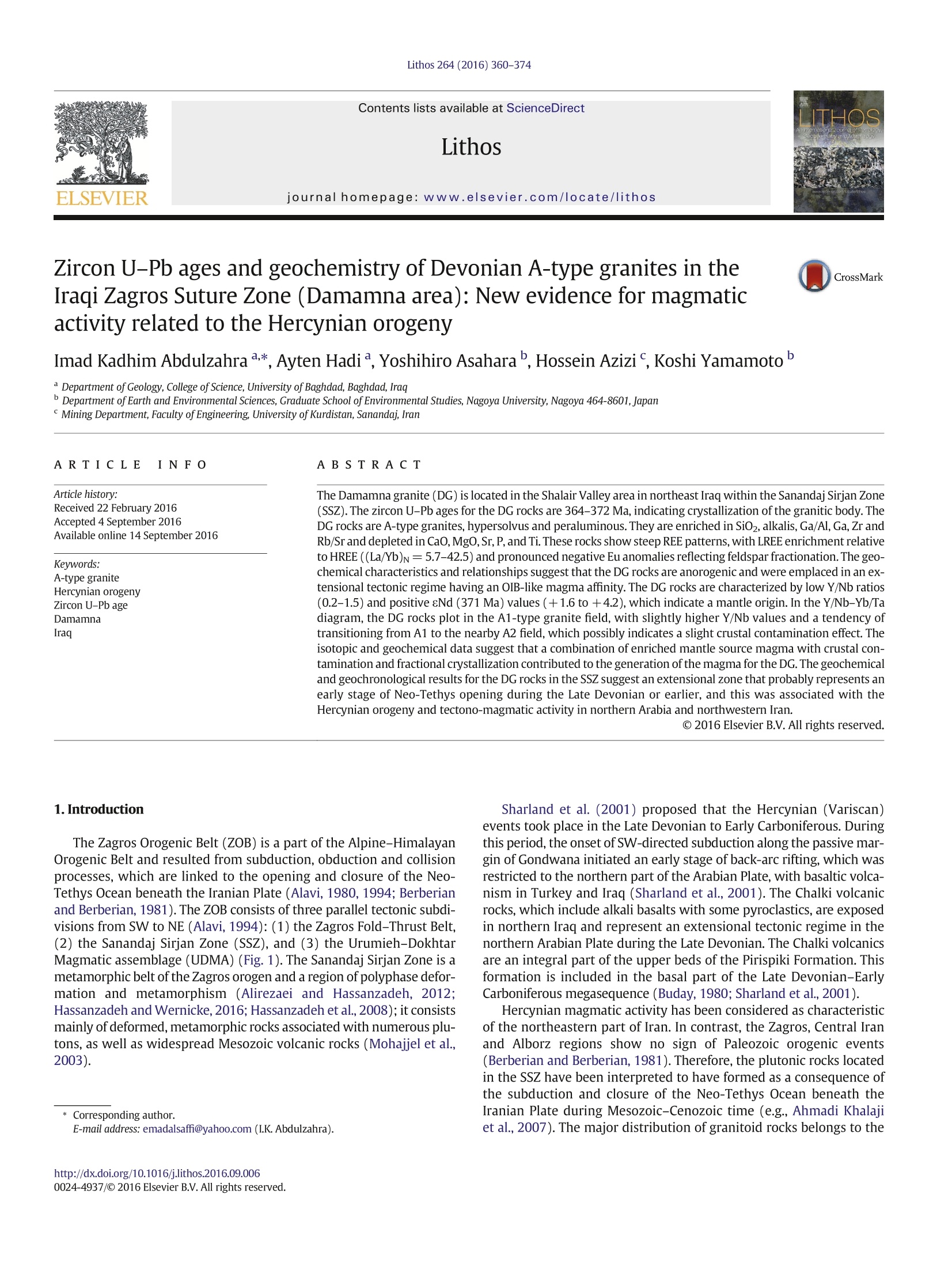
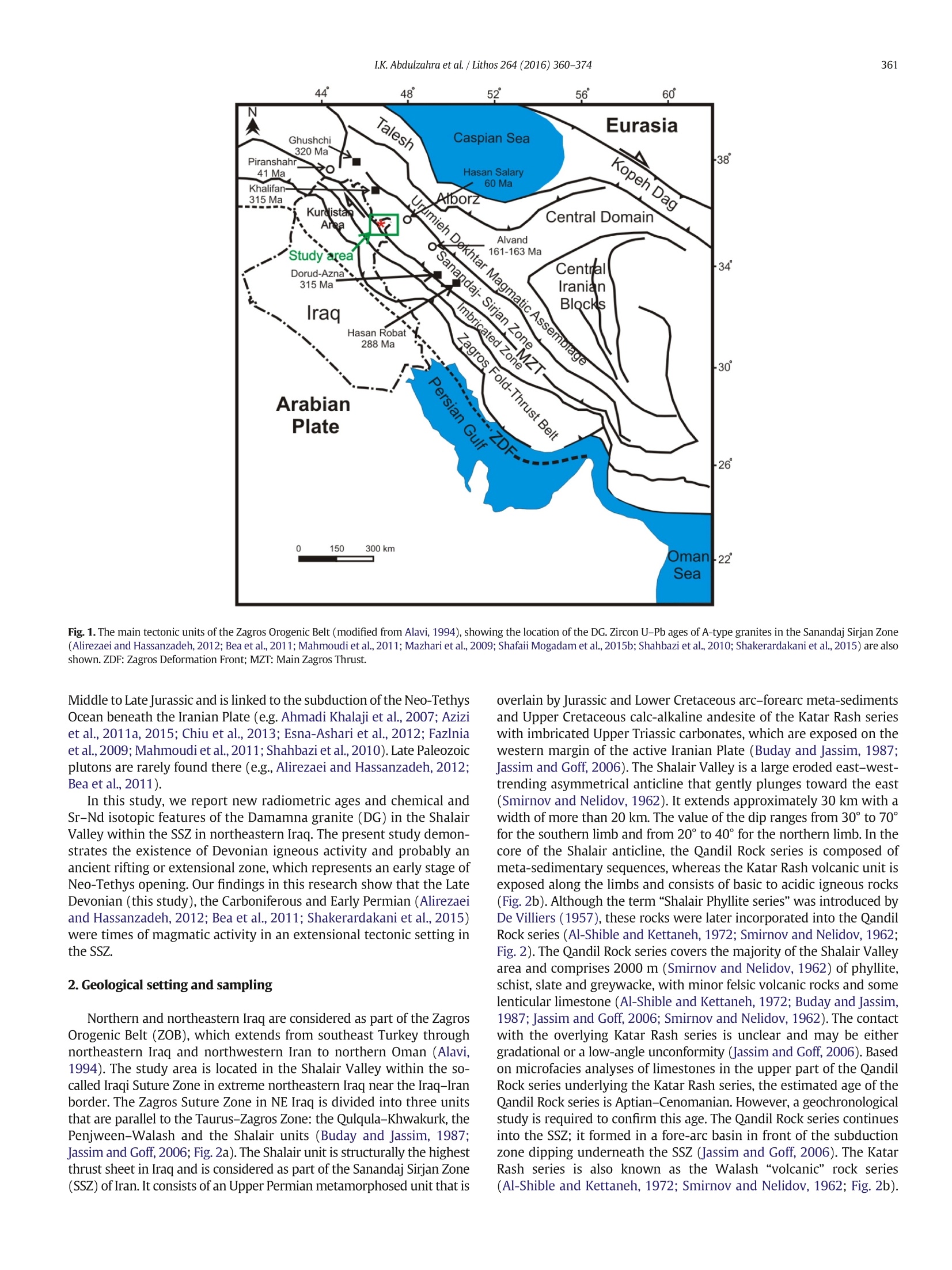

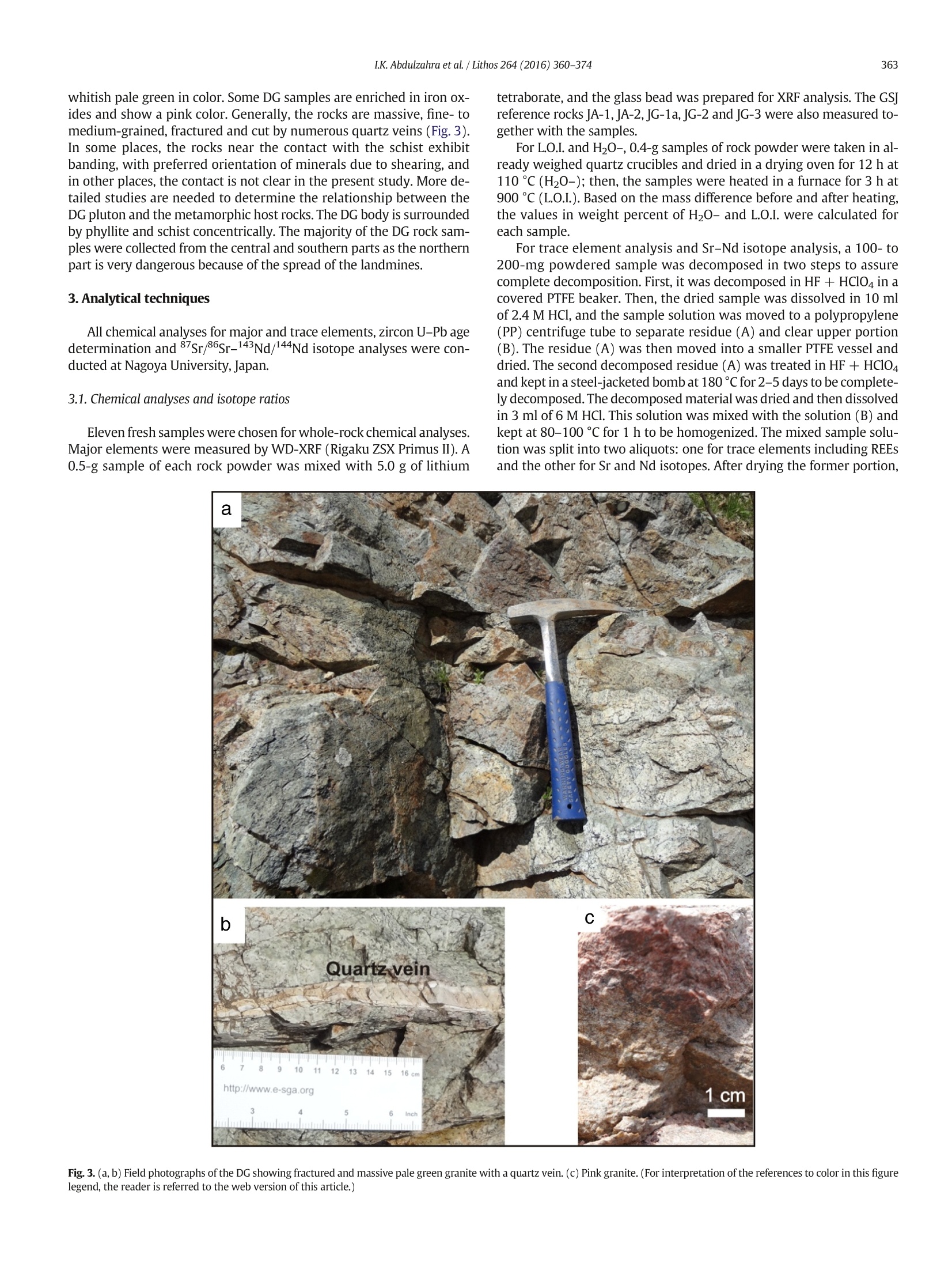
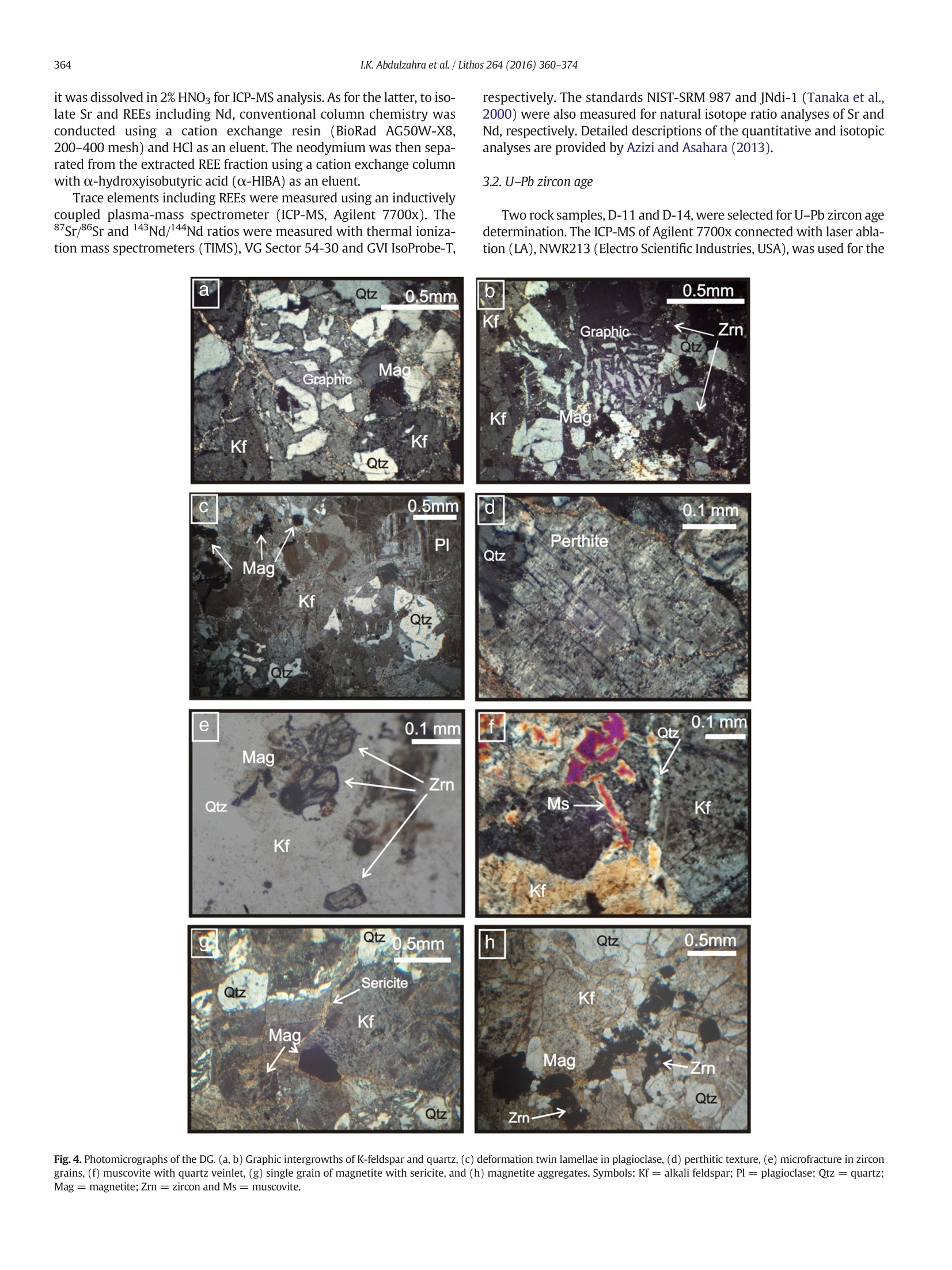

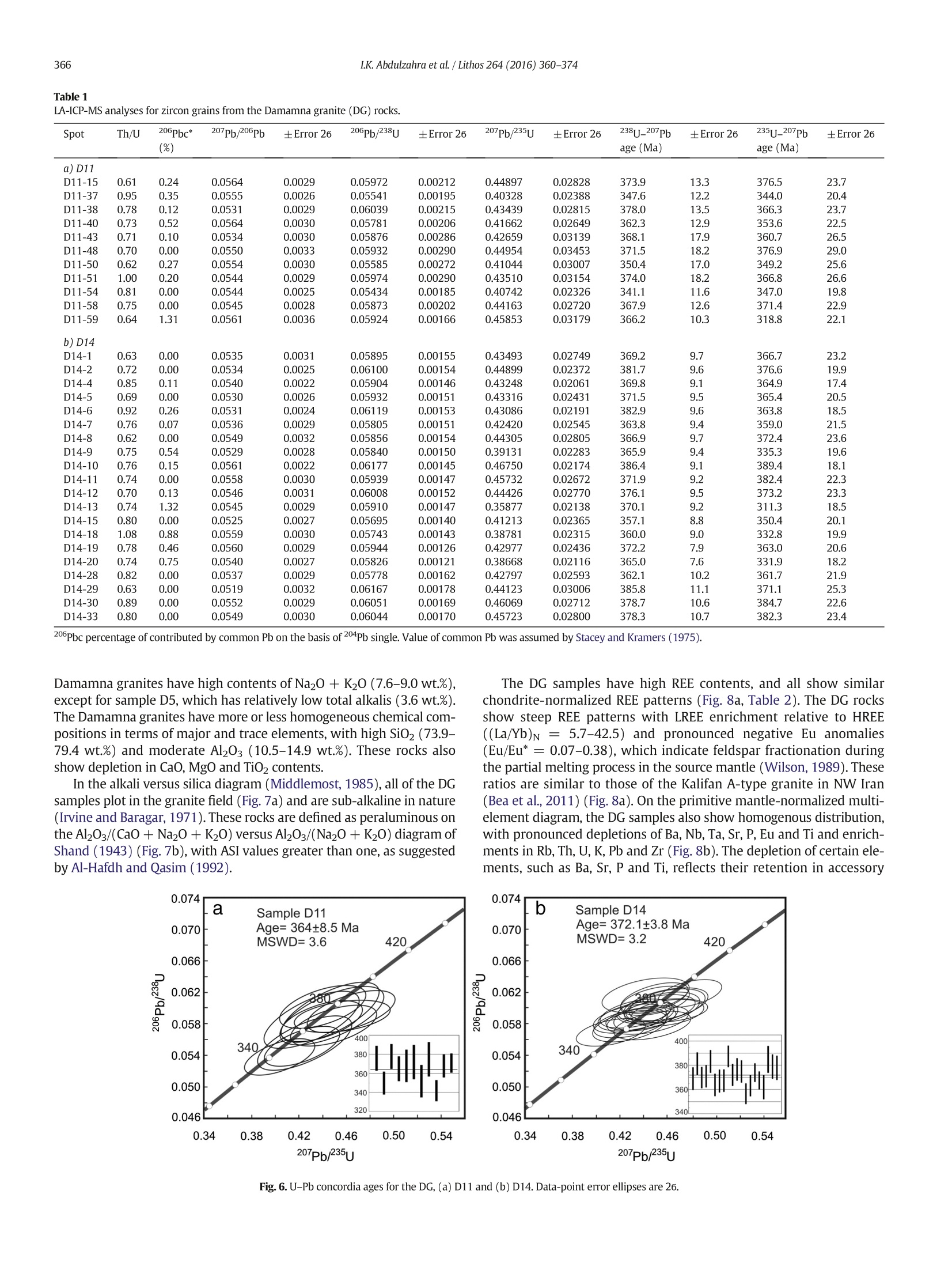
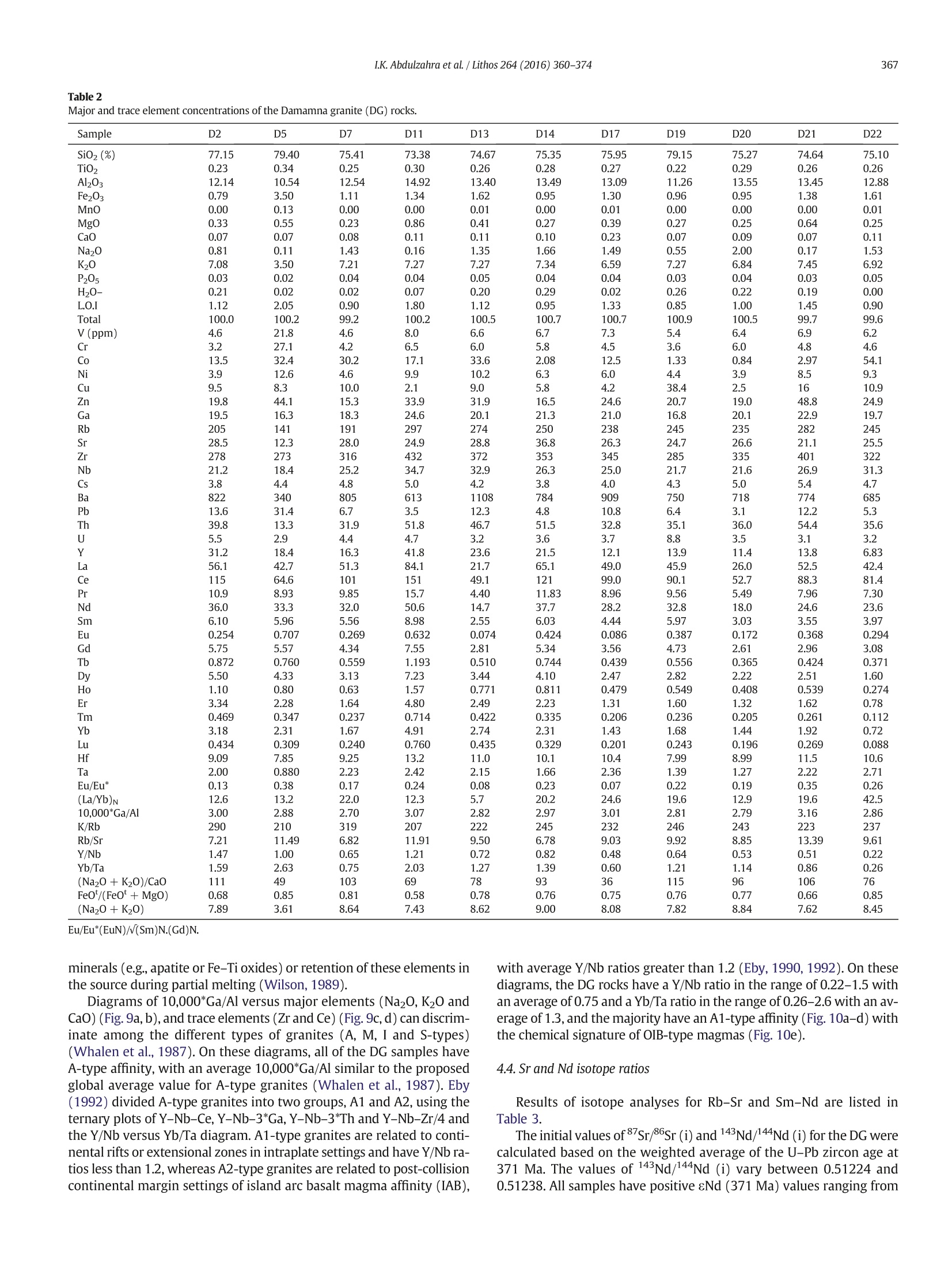
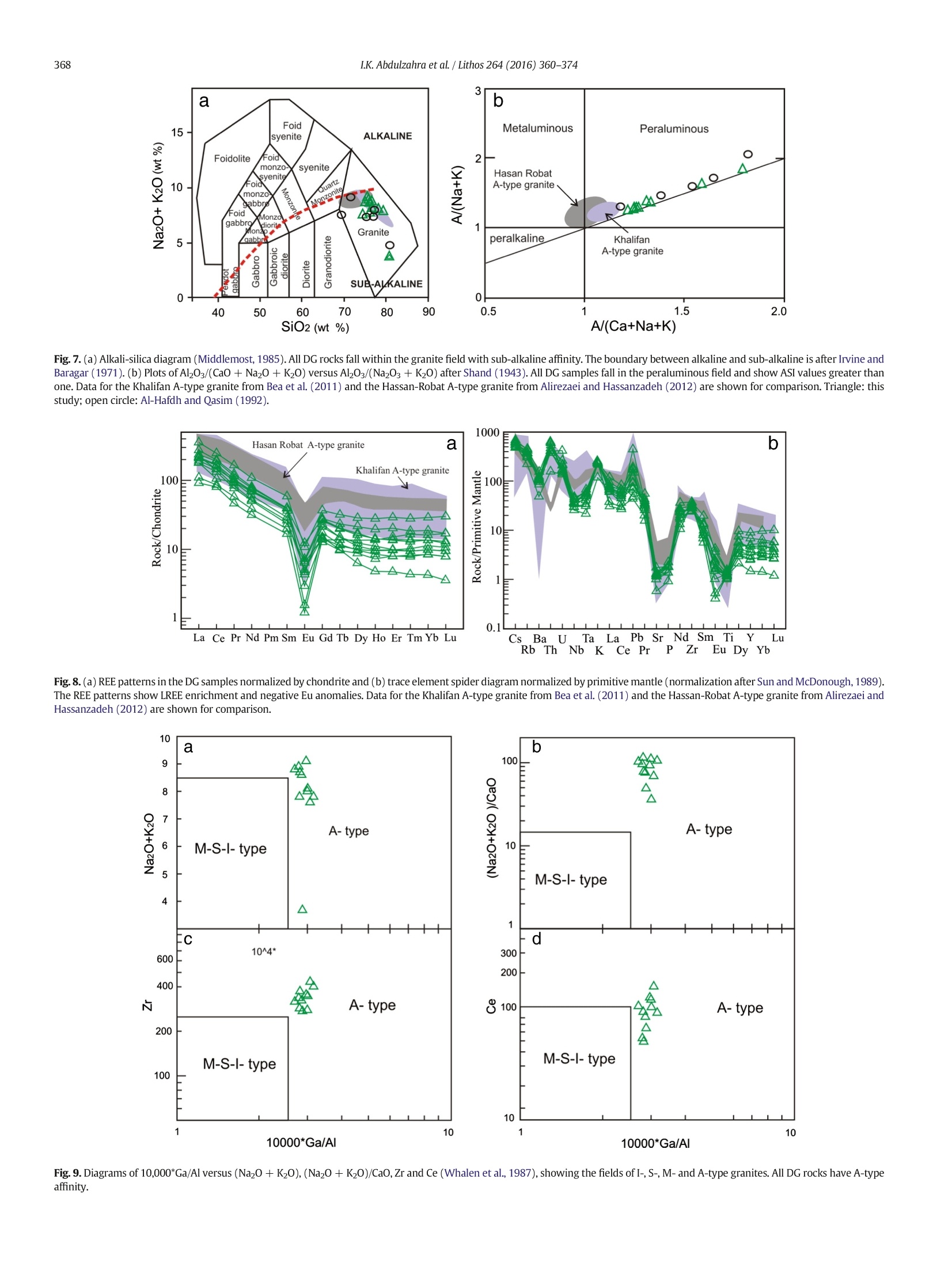
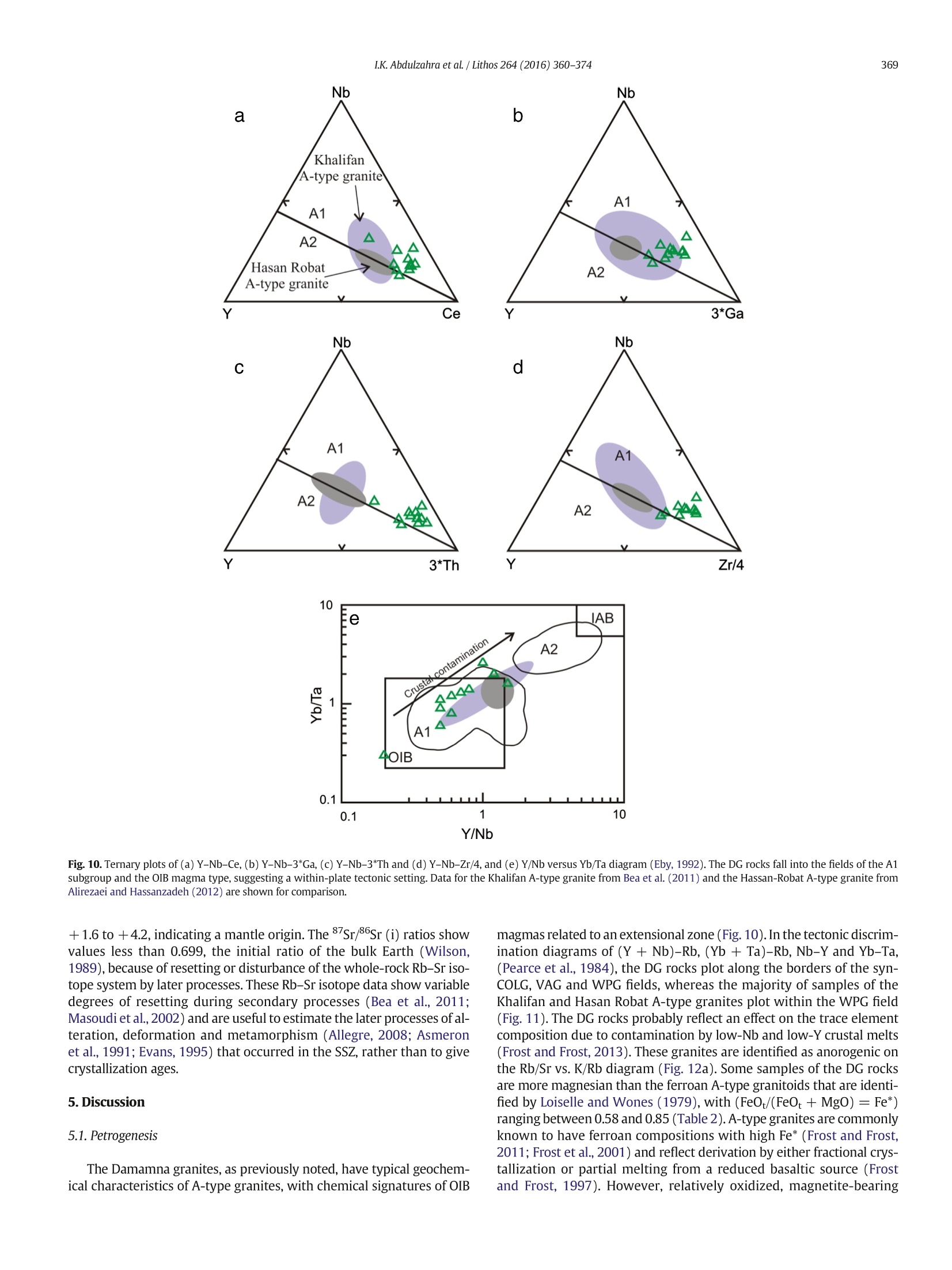
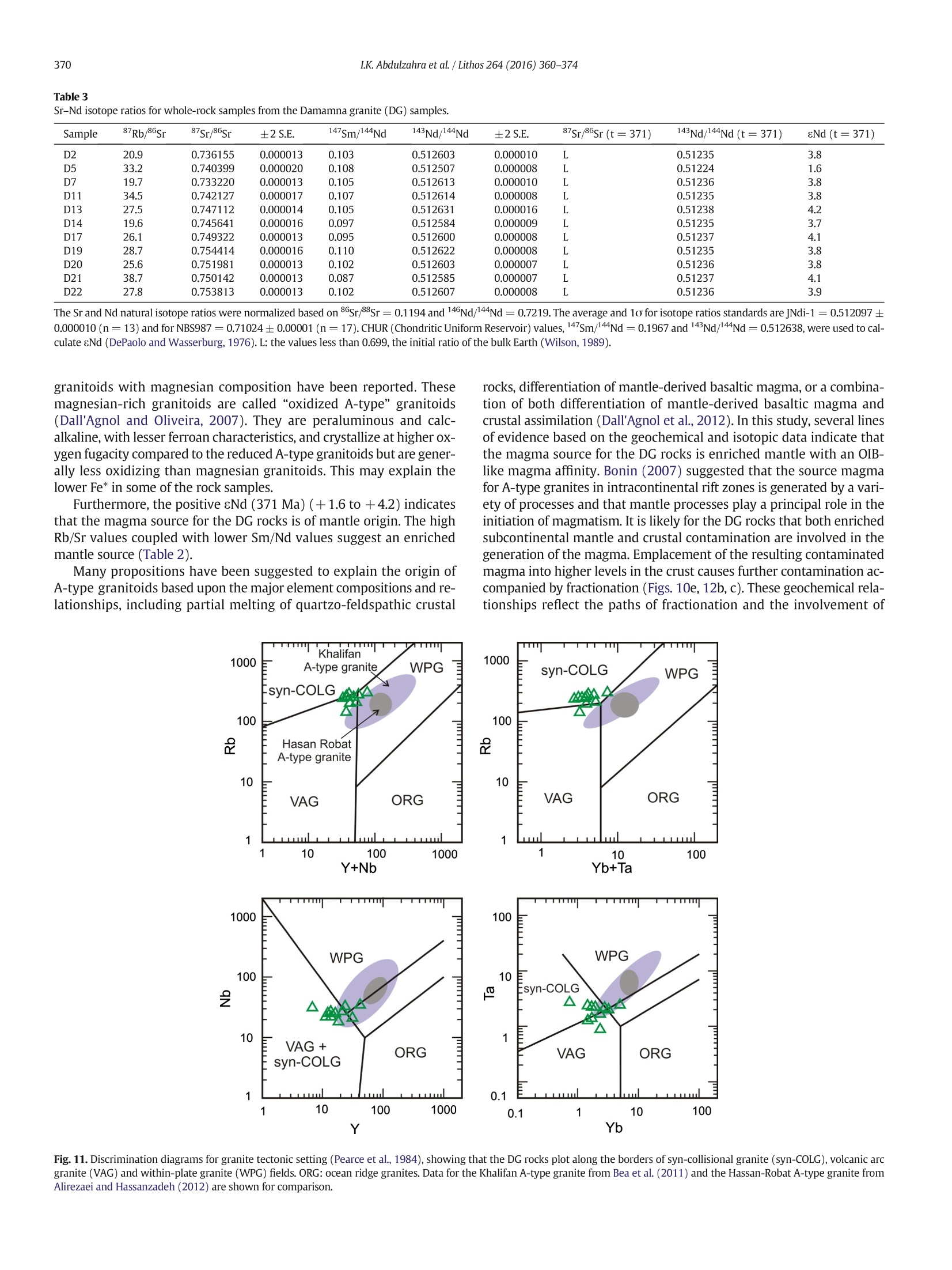
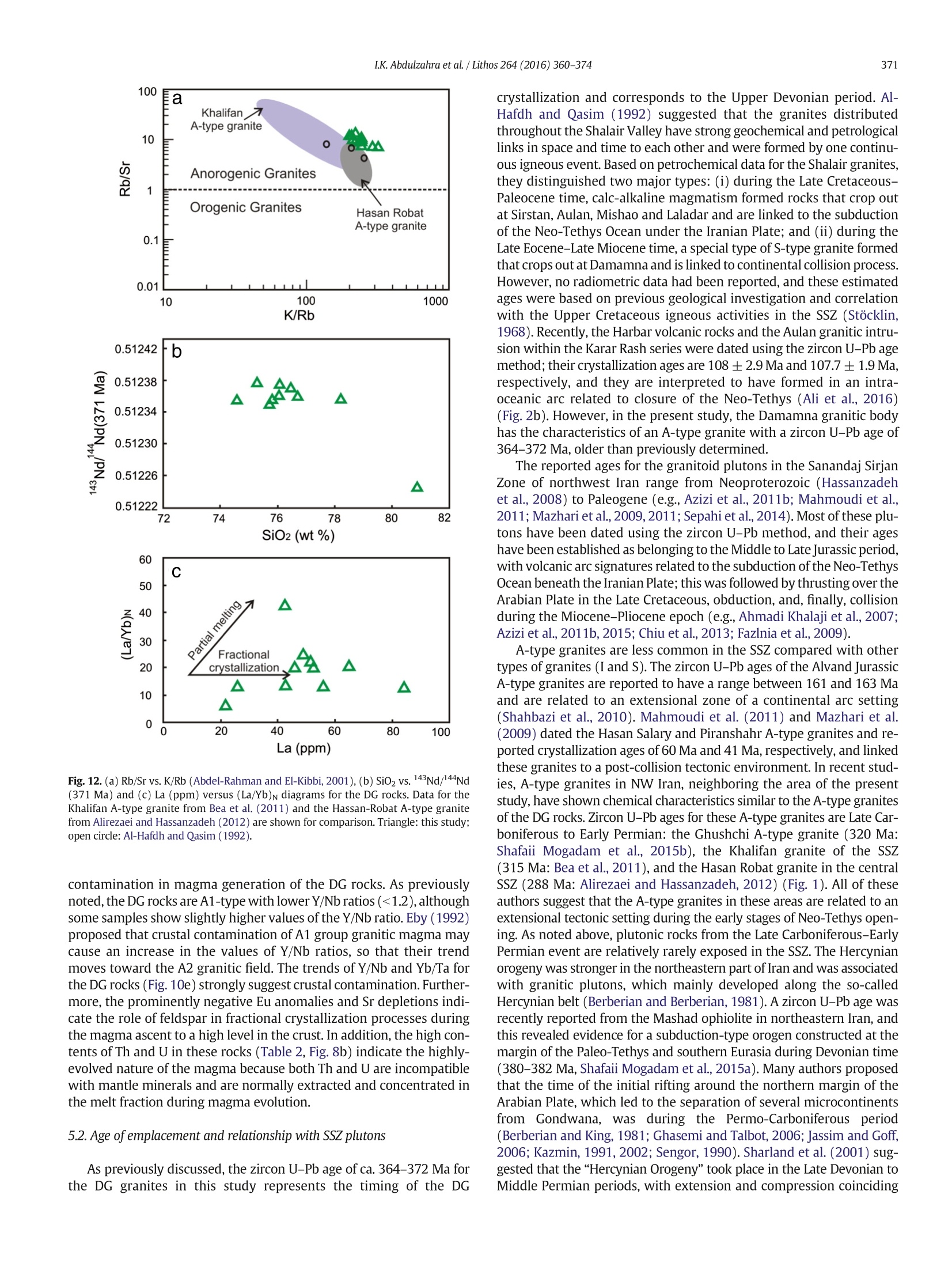
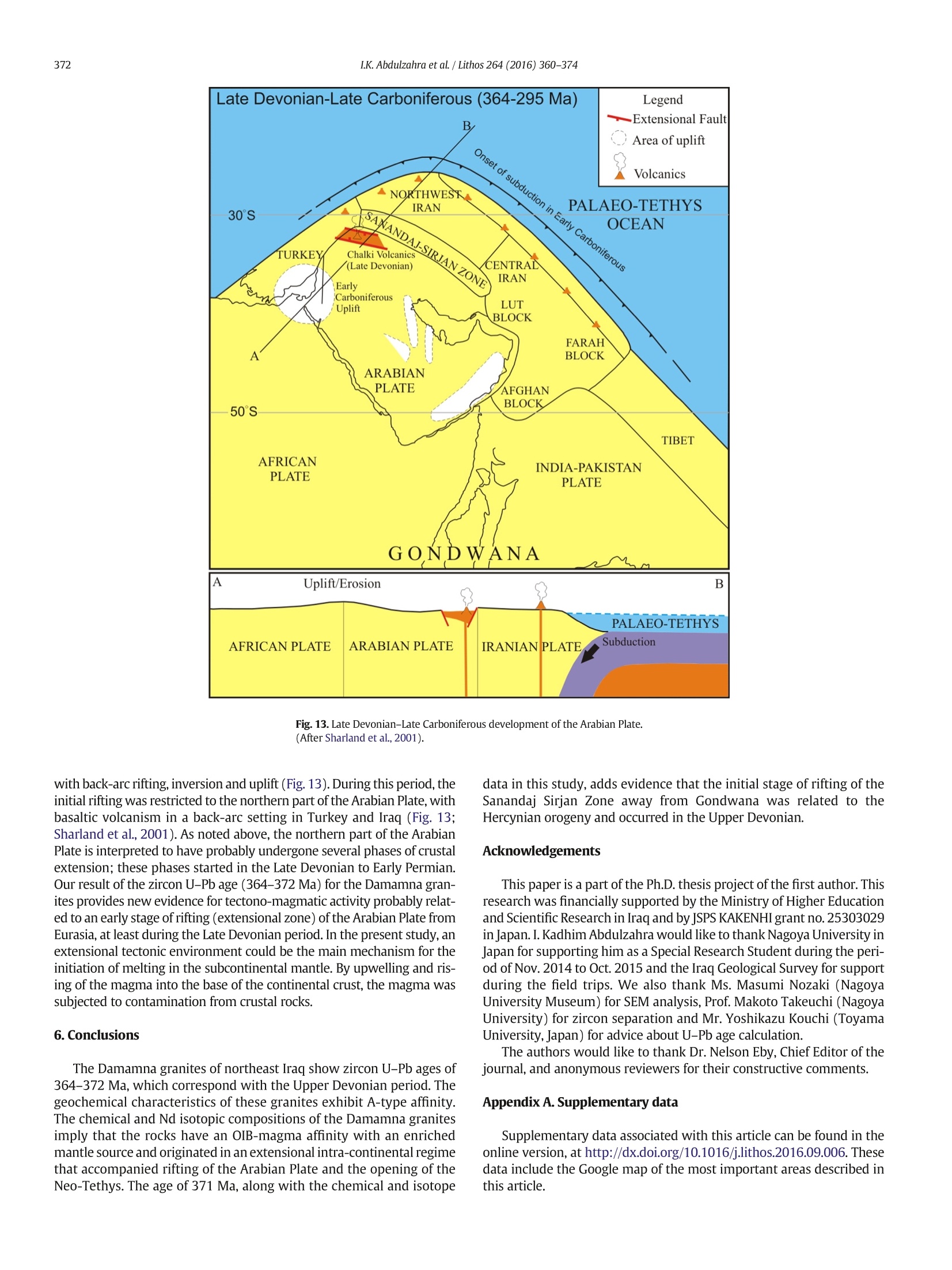
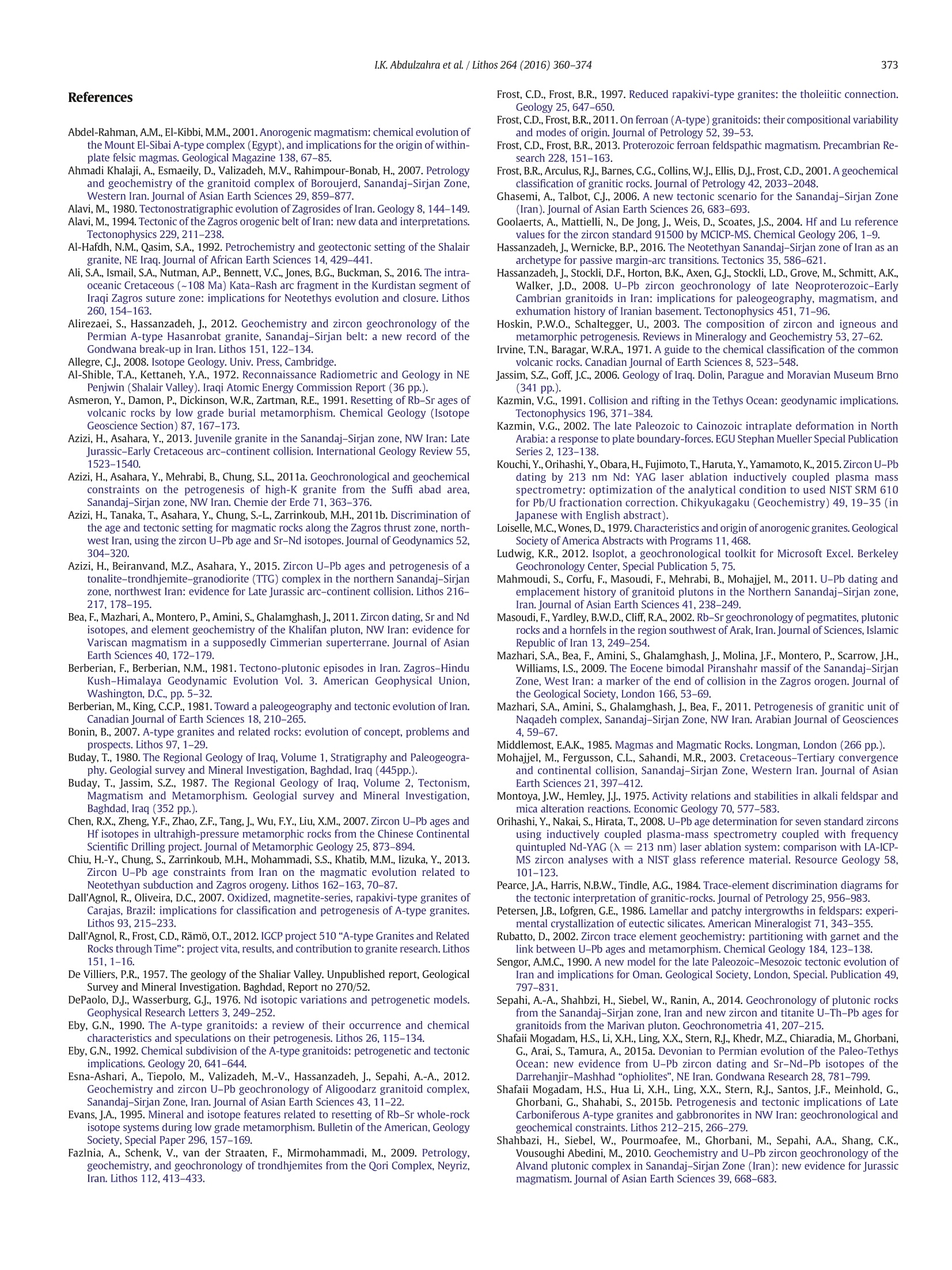

还剩13页未读,是否继续阅读?
上海凯来仪器有限公司为您提供《伊拉克扎格罗缝合带(Damamna)泥盆系a型花岗岩中锆石U-Pb定年检测方案(激光剥蚀进样)》,该方案主要用于其他中锆石U-Pb定年检测,参考标准--,《伊拉克扎格罗缝合带(Damamna)泥盆系a型花岗岩中锆石U-Pb定年检测方案(激光剥蚀进样)》用到的仪器有ESL213 灵活的激光剥蚀系统
推荐专场
相关方案
更多
该厂商其他方案
更多

